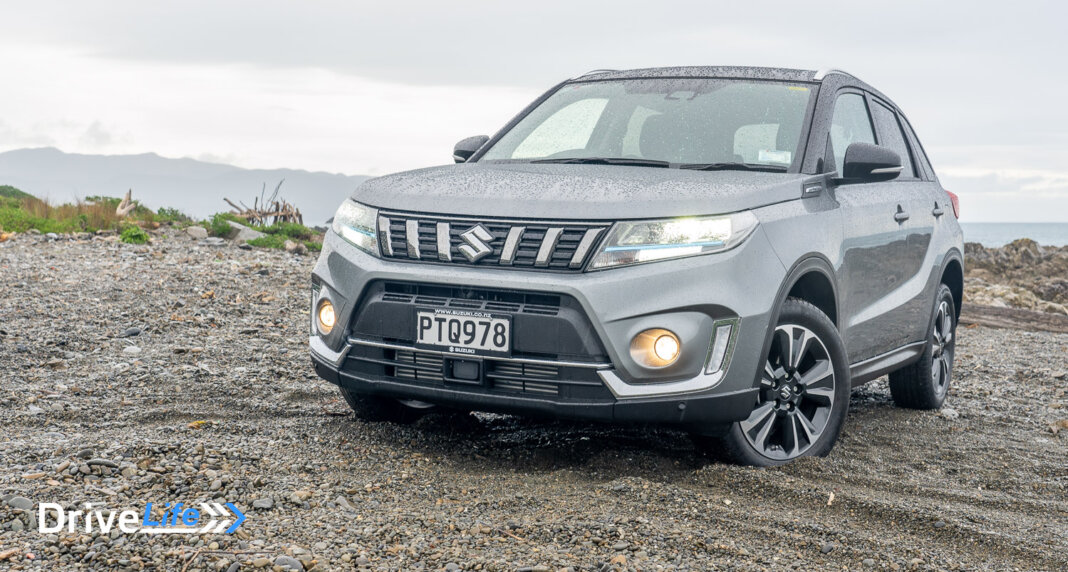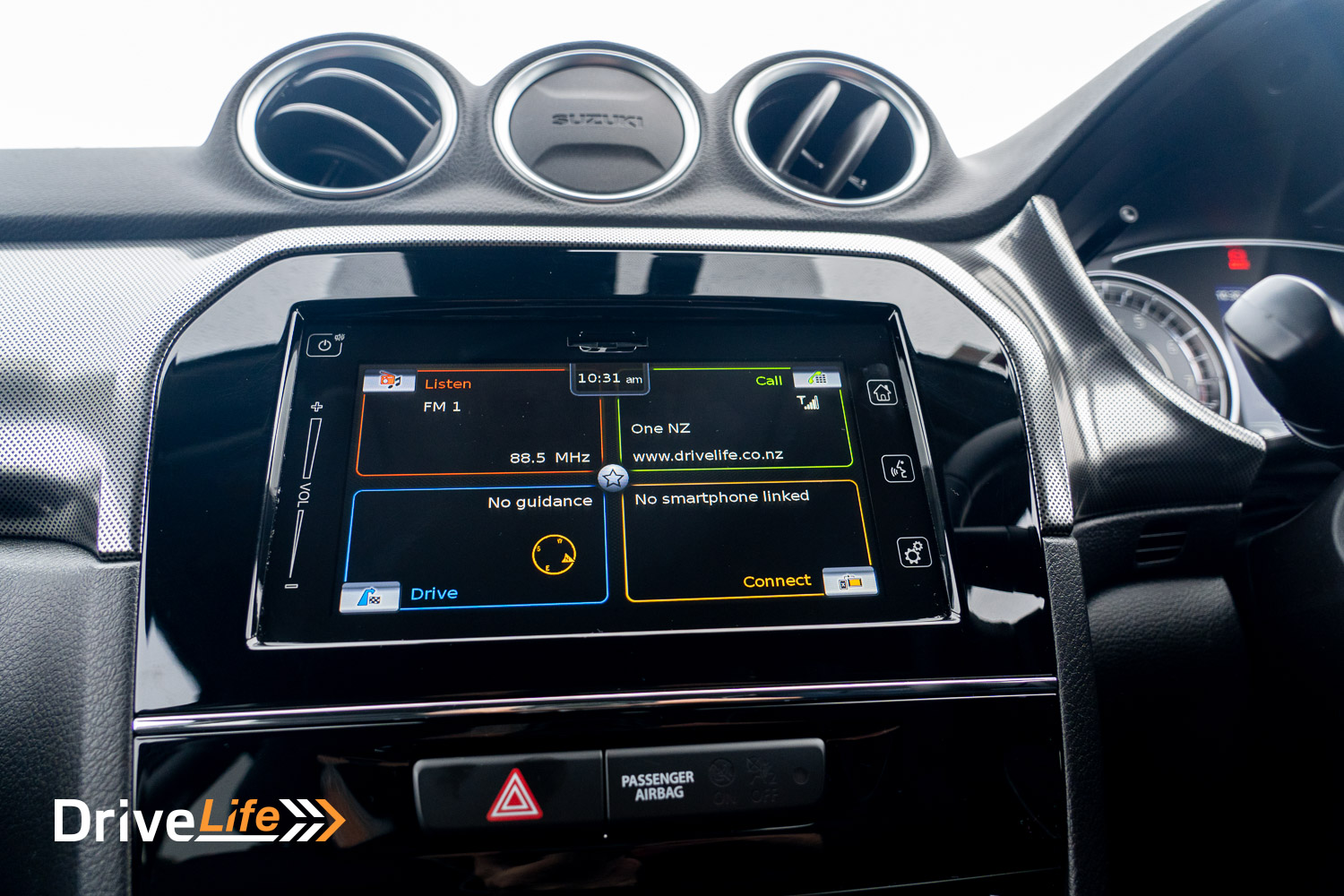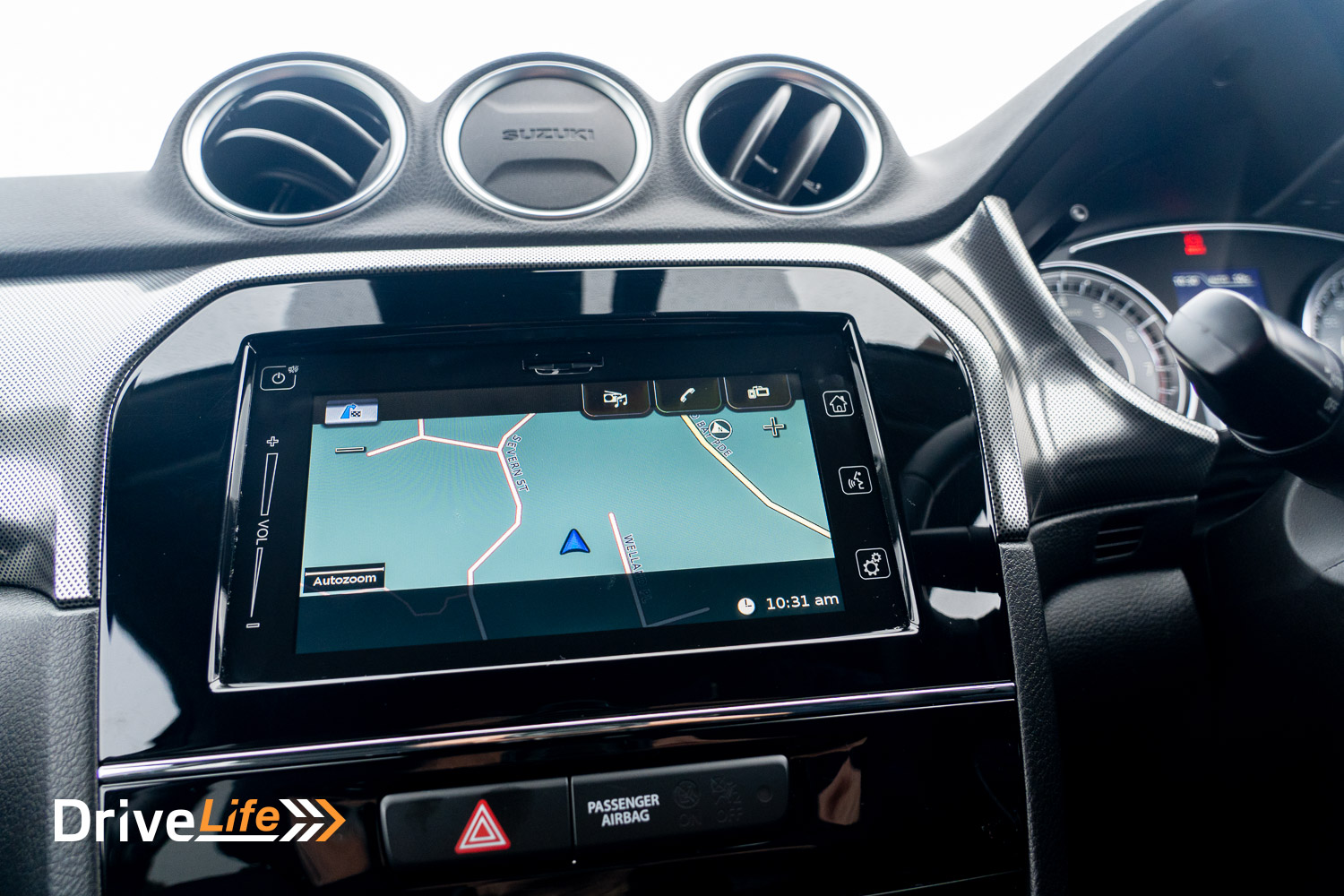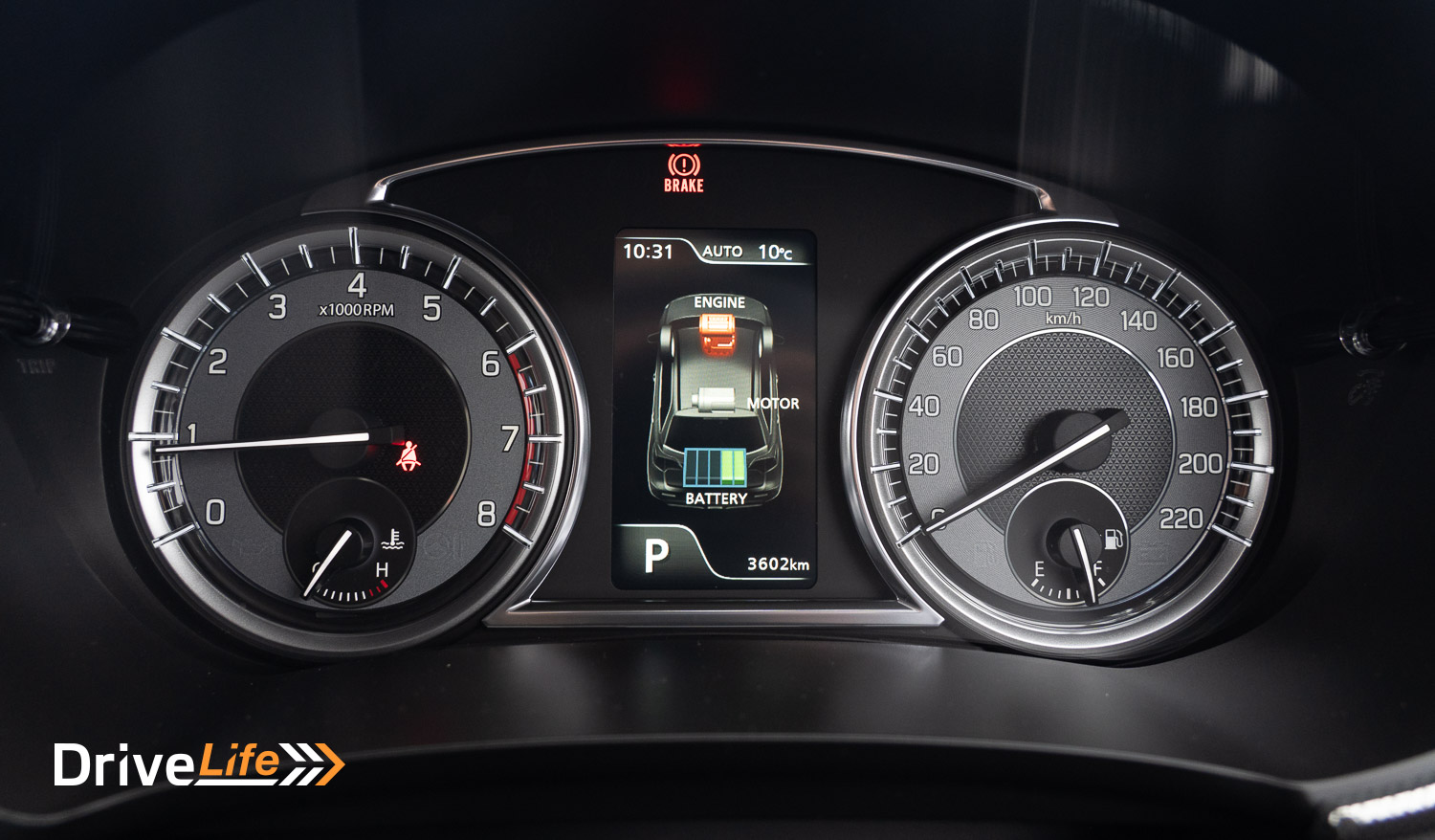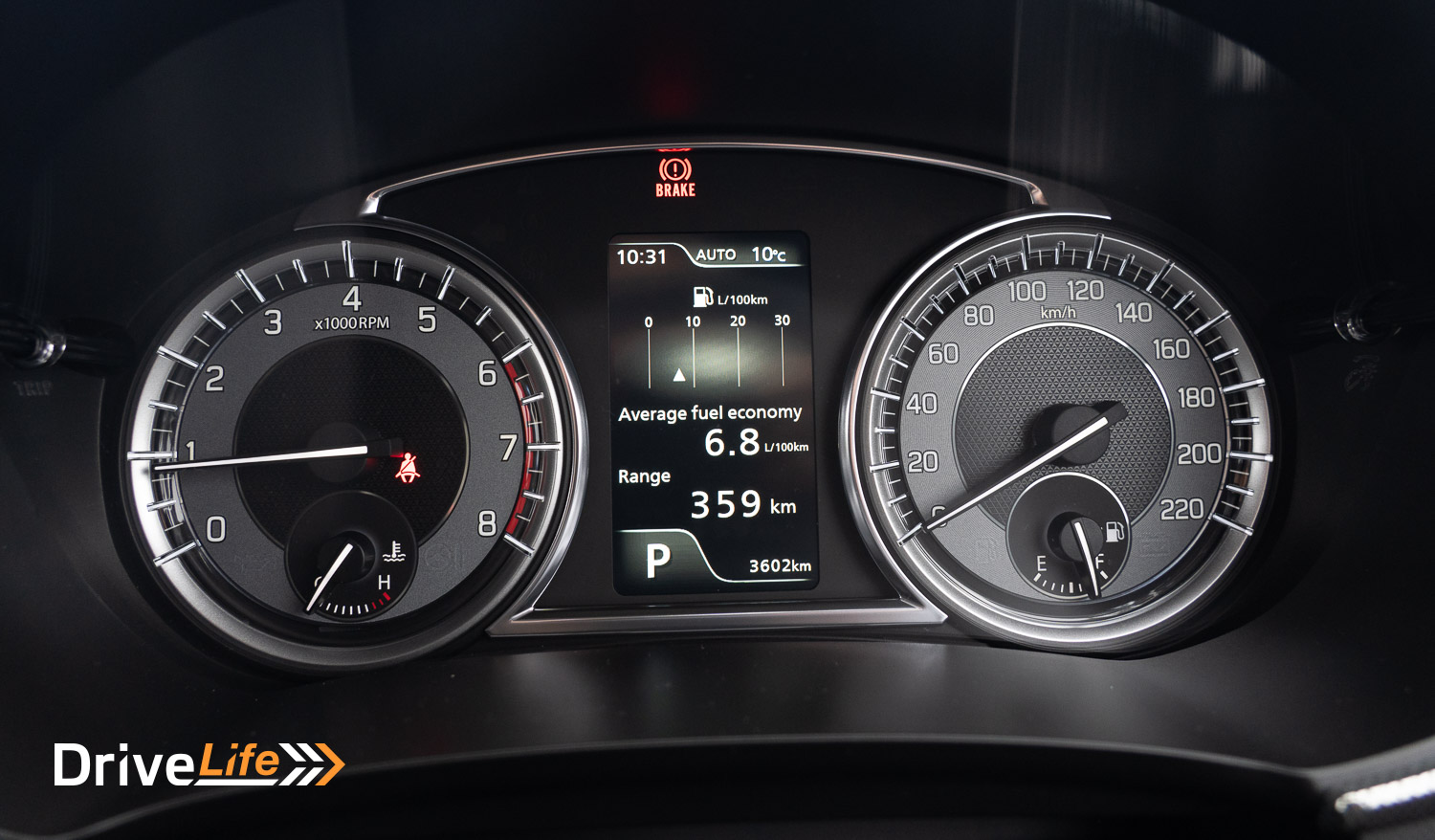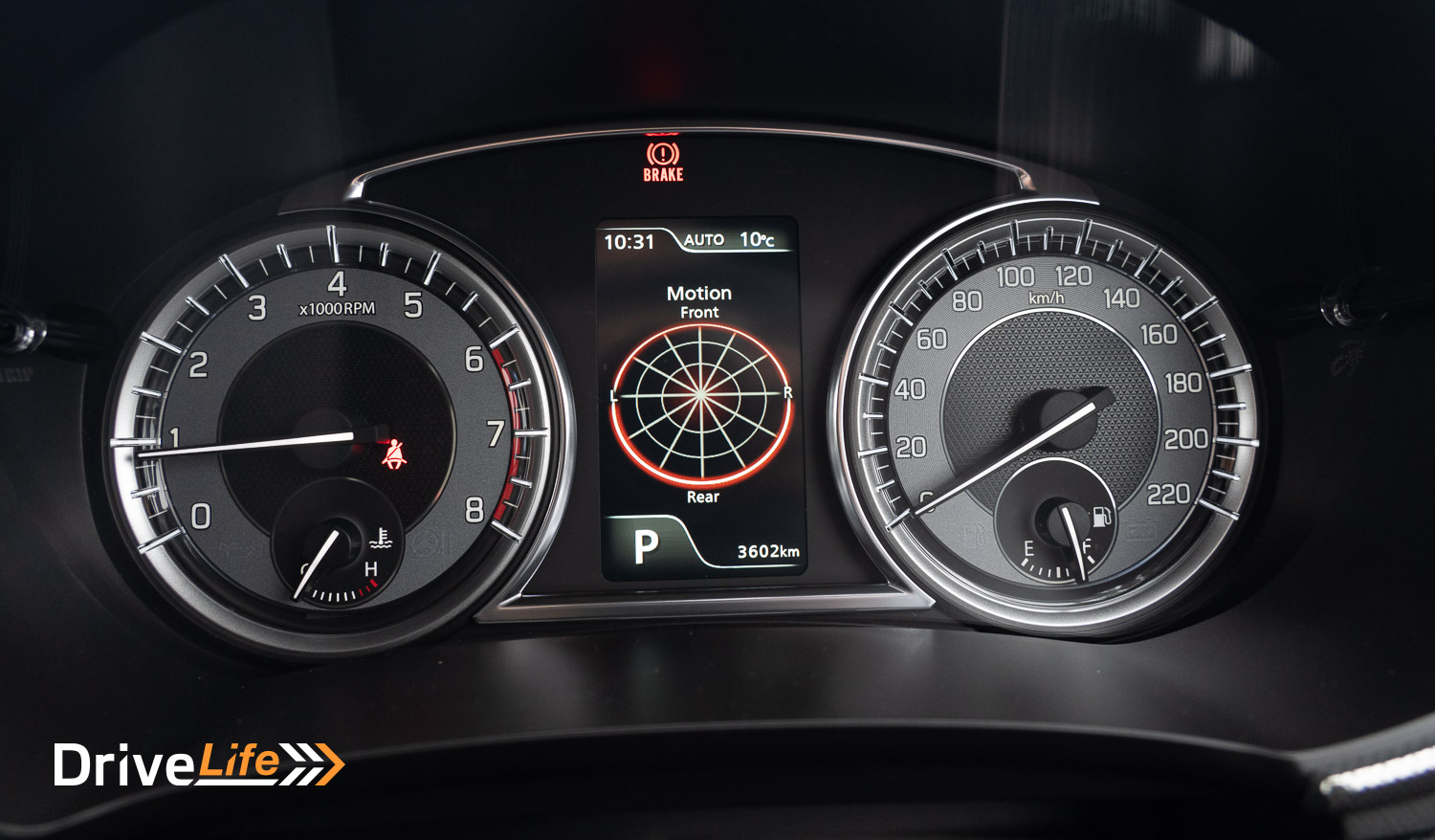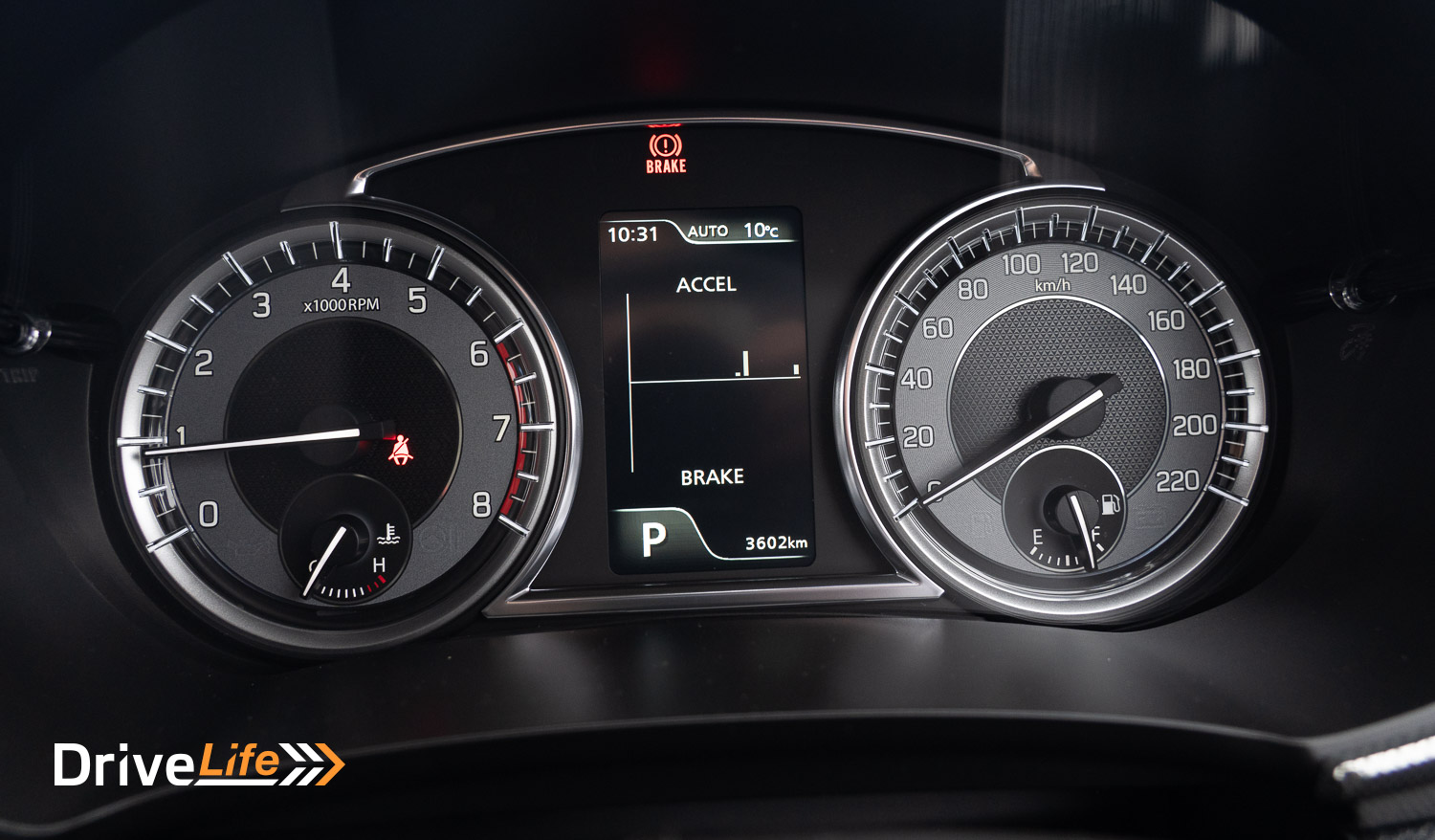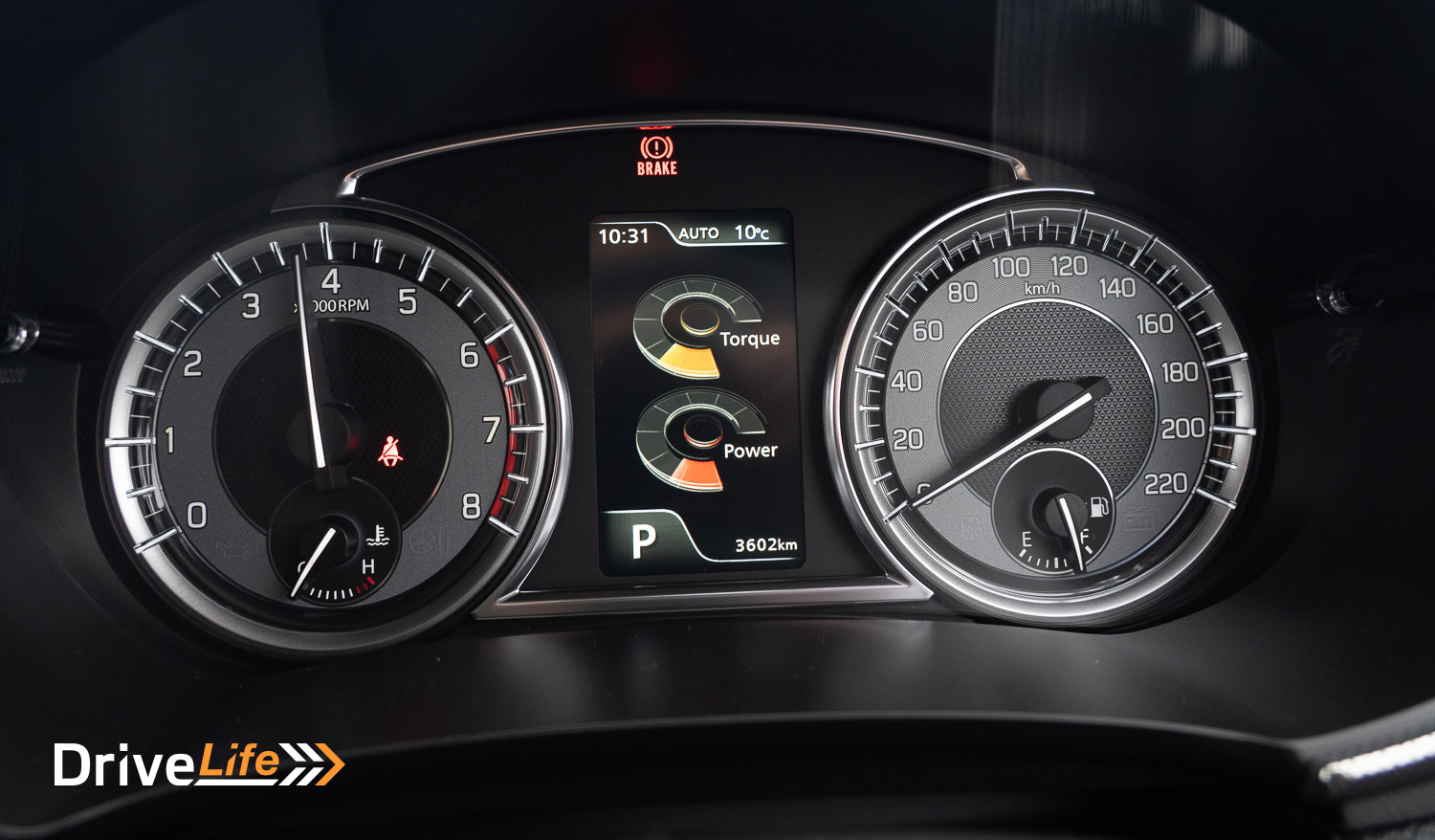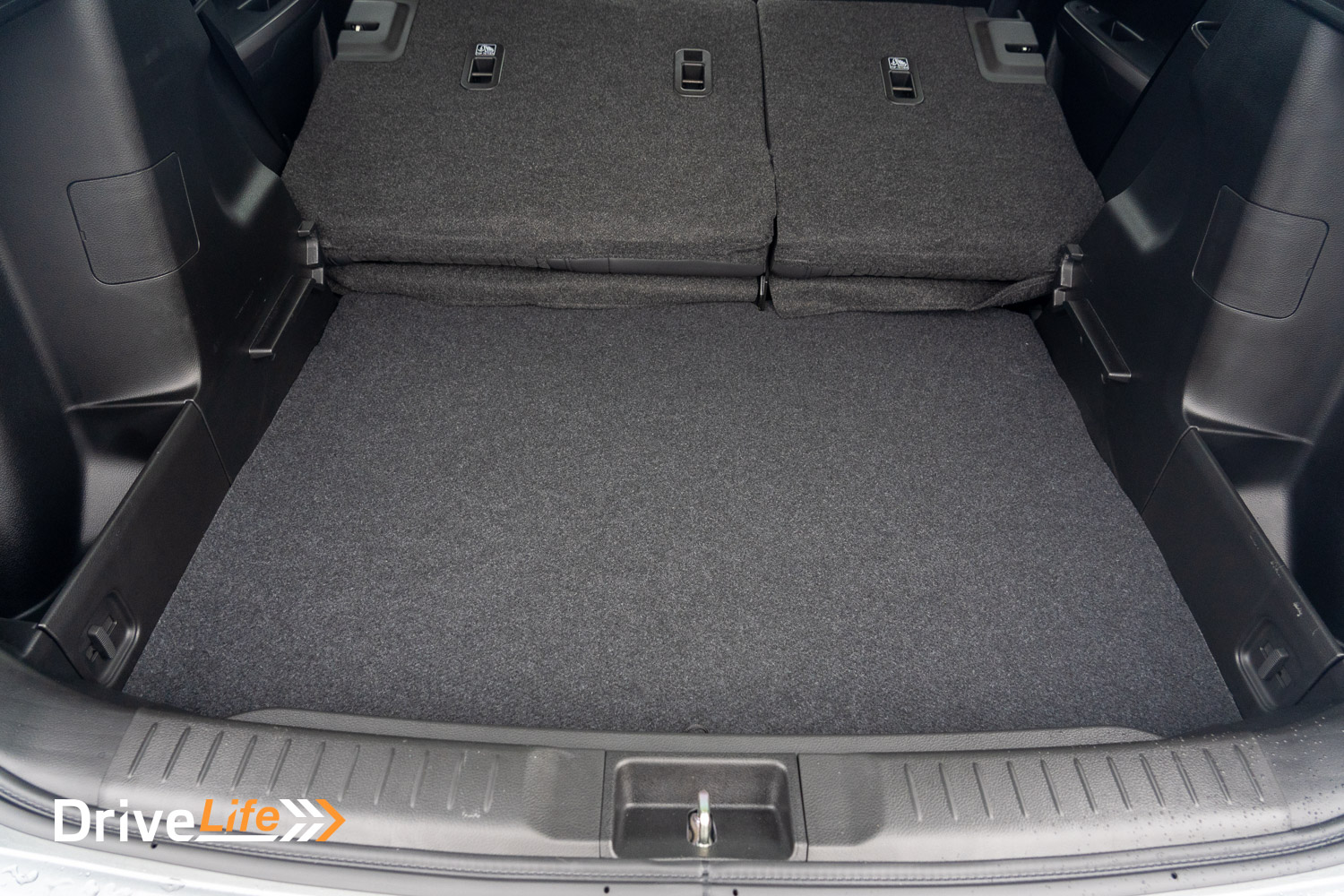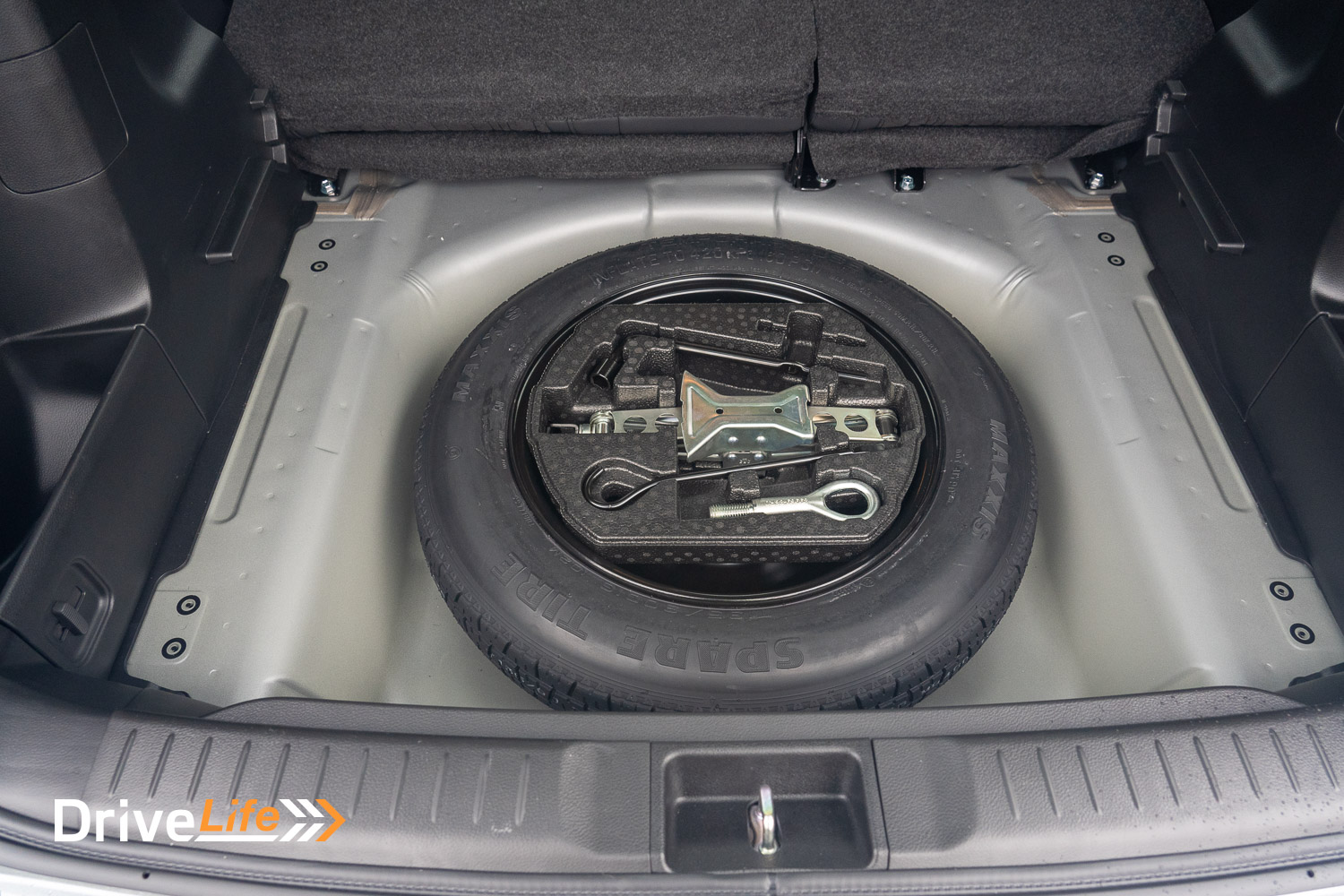The Vitara is a legacy product for Suzuki. Its name traces back to 1988, when it was first unveiled to the world as a small yet capable, boxy 4WD, akin to a Suzuki Jimny. The short-wheelbase and light frame allowed it to skip across rough terrain, and made it a darling in off-roader circles.
It wasn’t until 2015, when Suzuki revived the Vitara name, that it re-emerged as road-orientated, small crossover SUV. Although it went against its off-road roots, the modern Vitara won the hearts of many Kiwi buyers for being a solid-performing, yet inexpensive small SUV.
Today, this modern Vitara has existed for 8 years as of 2023. In 2022, Suzuki introduced the Vitara Hybrid, marking their second hybridised offering, beyond the Suzuki Swift Hybrid.
So, how does this new-age powertrain fit into an older-age format?
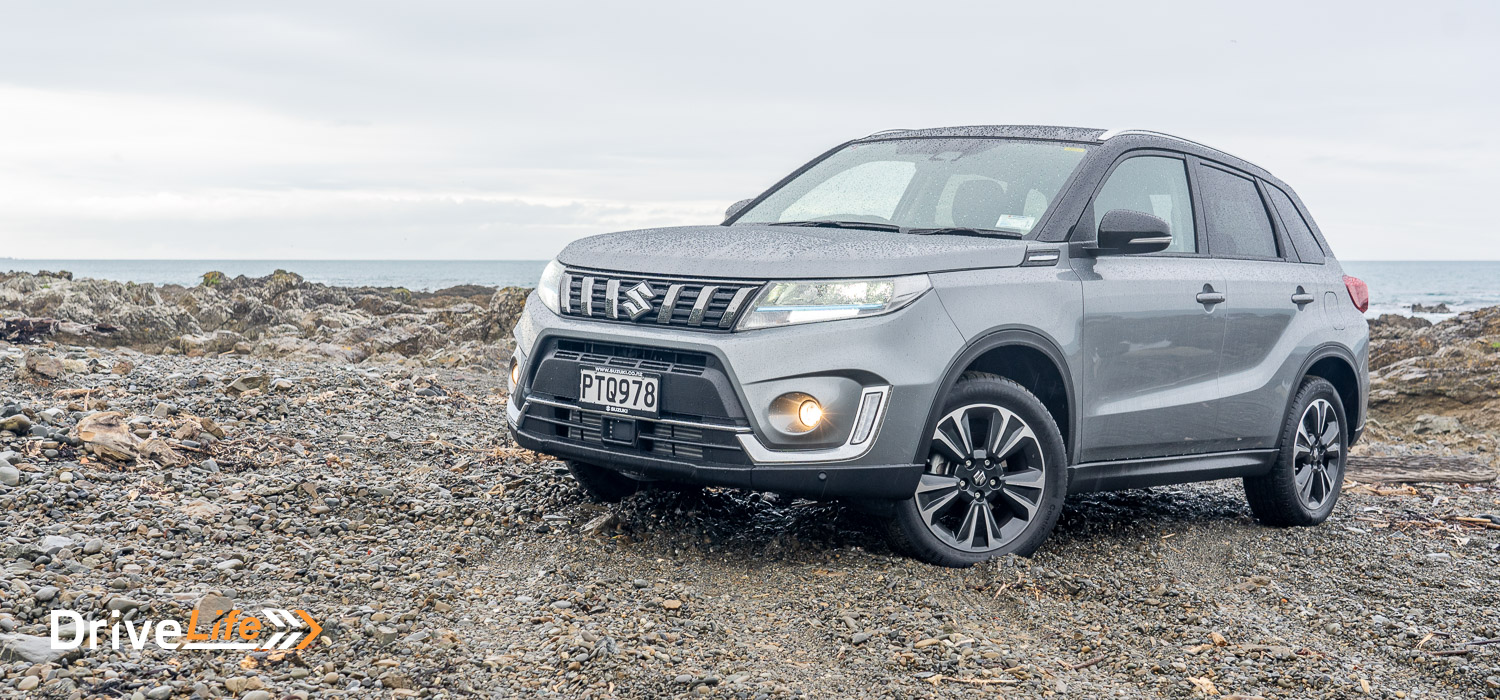
What We Like and Dislike About The 2023 Suzuki Vitara Hybrid JLX AWD
| What we like | What we don’t like |
| Simple, utilitarian interior Torquey engine Solid gearbox | Dated interior Dated infotainment Marginal fuel savings Adaptive cruise somewhat janky Added cost from running 95 Octane |
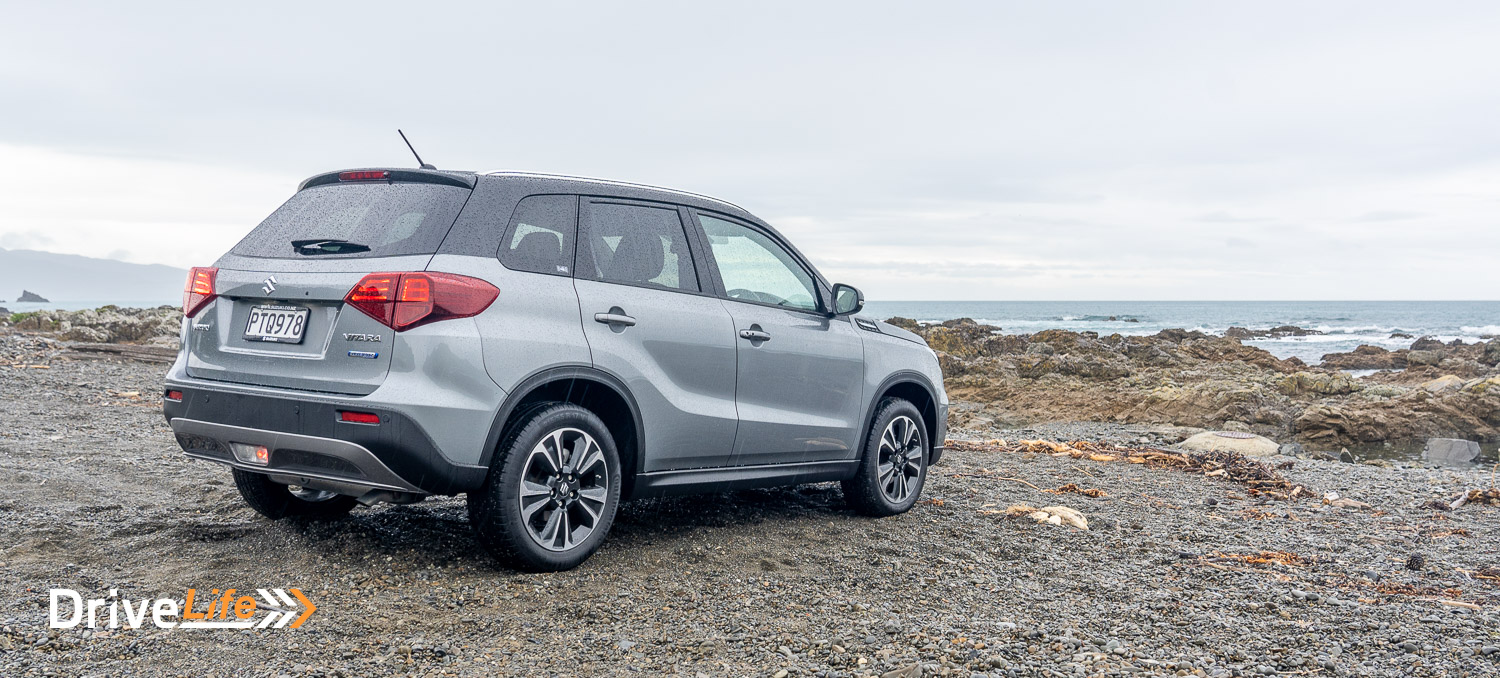
What’s In the 2023 Suzuki Vitara Hybrid Range?
There are six different trim-levels listed on Suzuki’s website for the Vitara Hybrid. In actuality, there’s only two trim levels, being the entry level JX and higher-spec JLX. However, depending on transmission choice in the JX trim, whether you want a two-tone paint, and if you want all-wheel drive, the options expand to six models.
The below table should make some sense of it.
| Model | Engine | Transmission | Price |
| Suzuki Vitara Hybrid JX 2WD | 1.4-litre turbocharged 4-cylinder petrol with 48V mild hybrid system | Manual | $39,990 |
| Suzuki Vitara Hybrid JX 2WD Two Tone | 1.4-litre turbocharged 4-cylinder petrol with 48V mild hybrid system | Automatic | $40,790 |
| Suzuki Vitara Hybrid JLX 2WD | 1.4-litre turbocharged 4-cylinder petrol with 48V mild hybrid system | Automatic | $41,990 |
| Suzuki Vitara Hybrid JLX 2WD Two Tone | 1.4-litre turbocharged 4-cylinder petrol with 48V mild hybrid system | Automatic | $42,790 |
| Suzuki Vitara Hybrid JLX AWD | 1.4-litre turbocharged 4-cylinder petrol with 48V mild hybrid system | Automatic | $44,990 |
| Suzuki Vitara Hybrid JLX AWD Two Tone | 1.4-litre turbocharged 4-cylinder petrol with 48V mild hybrid system | Automatic | $45,790 |
The engine for the Vitara Hybrid is Suzuki’s 1.4-litre turbocharged 4-cylinder petrol with 48V mild hybrid system, producing 95kW of power at 5,500rpm and 235Nm of torque between 2,000-3,000rpm.
The entry level Vitara Hybrid offers a 6-speed manual, and all models above have a 6-speed automatic transmission.
All-wheel drive variants of the Vitara Hybrid get, well, all-wheel drive, which Suzuki calls All-Grip Select. This also includes some off-road functions, such as hill descent control.
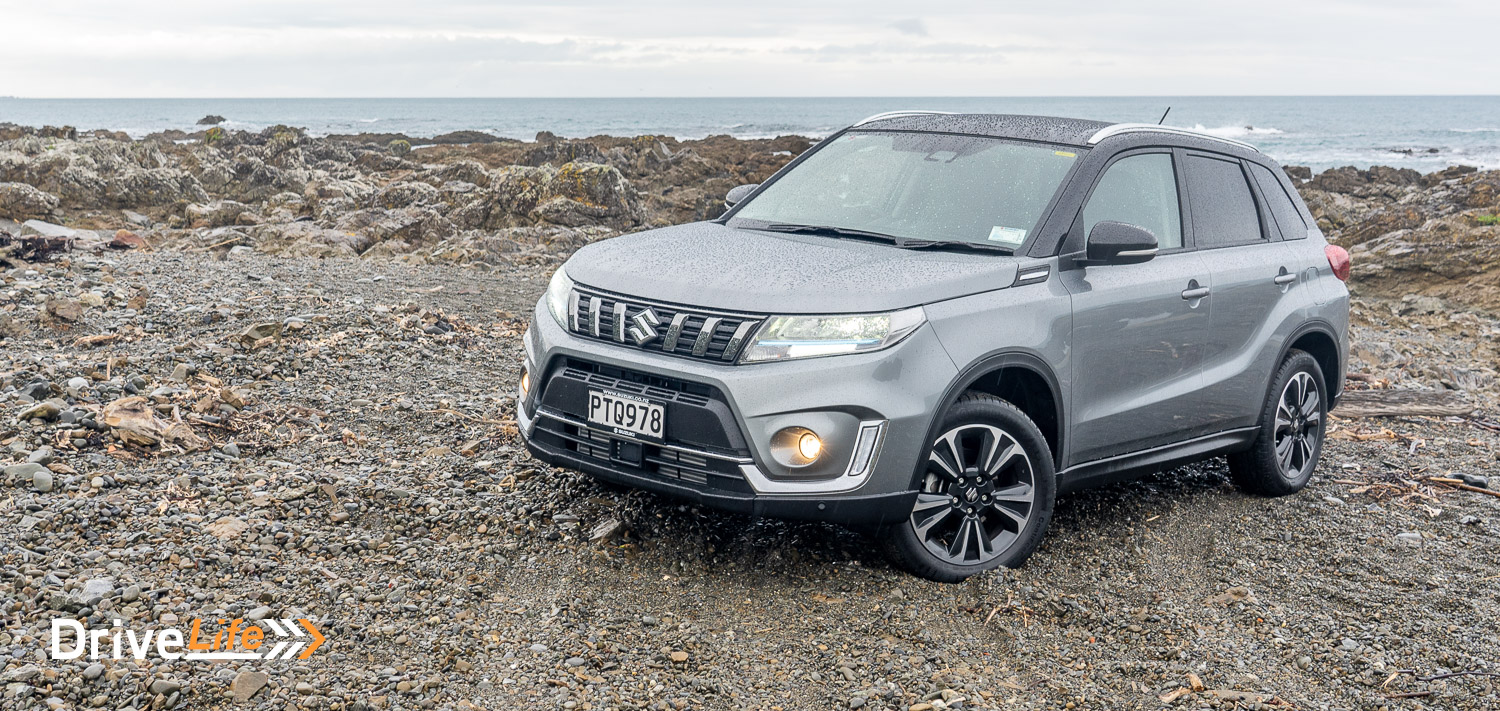
2023 Suzuki Vitara Hybrid Standard Equipment Highlights
The entry-level JX offers:
- 17-inch alloy wheels
- 9” Infotainment with Bluetooth and Reverse Camera
- Android Auto
- Apple Carplay
- Auto Lights
- Auto rain-sensing
- Climate control
- Cloth Upholstry
- Engine auto stop start system
- Four speaker system
- Front and rear fog lamps
- Front and Rear LED Lights
- Heated side Mirrors
- Hill hold control
- ISOFIX x2
- Leather steering wheel
- LED Daytime Running Lights
- Manually adjusting front seats
- Privacy glass
- Roof rails
- Sat-Nav
The higher spec JLX adds:
- 17” alloy wheels with polished finish
- Electrically folding exterior mirrors
- Front and rear parking sensors
- Keyless entry and push-button start
- Leather and suede type fabric
- Six speaker audio system
There’s also a suite of safety features that come standard with all Vitara Hybrid models.
- 7-Airbags
- Adaptive cruise control with stop & go function
- Autonomous Emergency Braking
- Blind spot monitor
- Dual Sensor Brake Support
- Electronic Stability Programme
- Hill hold control
- Lane departure warning
- Rear cross traffic alert
- Tyre Pressure Monitor
- Weaving alert
There are 3 standard colours to choose from, or 6 two-tone colours for the Vitara Hybrid.
Standard colours include:
- Cosmic Black Pearl
- Cool White Pearl
- Premium Silver Metallic
Two tone colours feature a Cosmic Black Pearl roof, and include the following body colours:
- Solar Yellow Metallic
- Premium Silver 2 Metallic
- Savannah Ivory Metallic
- Ice Greyish Blue Metallic
- Atlantis Turquoise Pearl Metallic
- Bright Red 5 Metallic
For more information on Vitara Hybrid, check out the Suzuki New Zealand website.
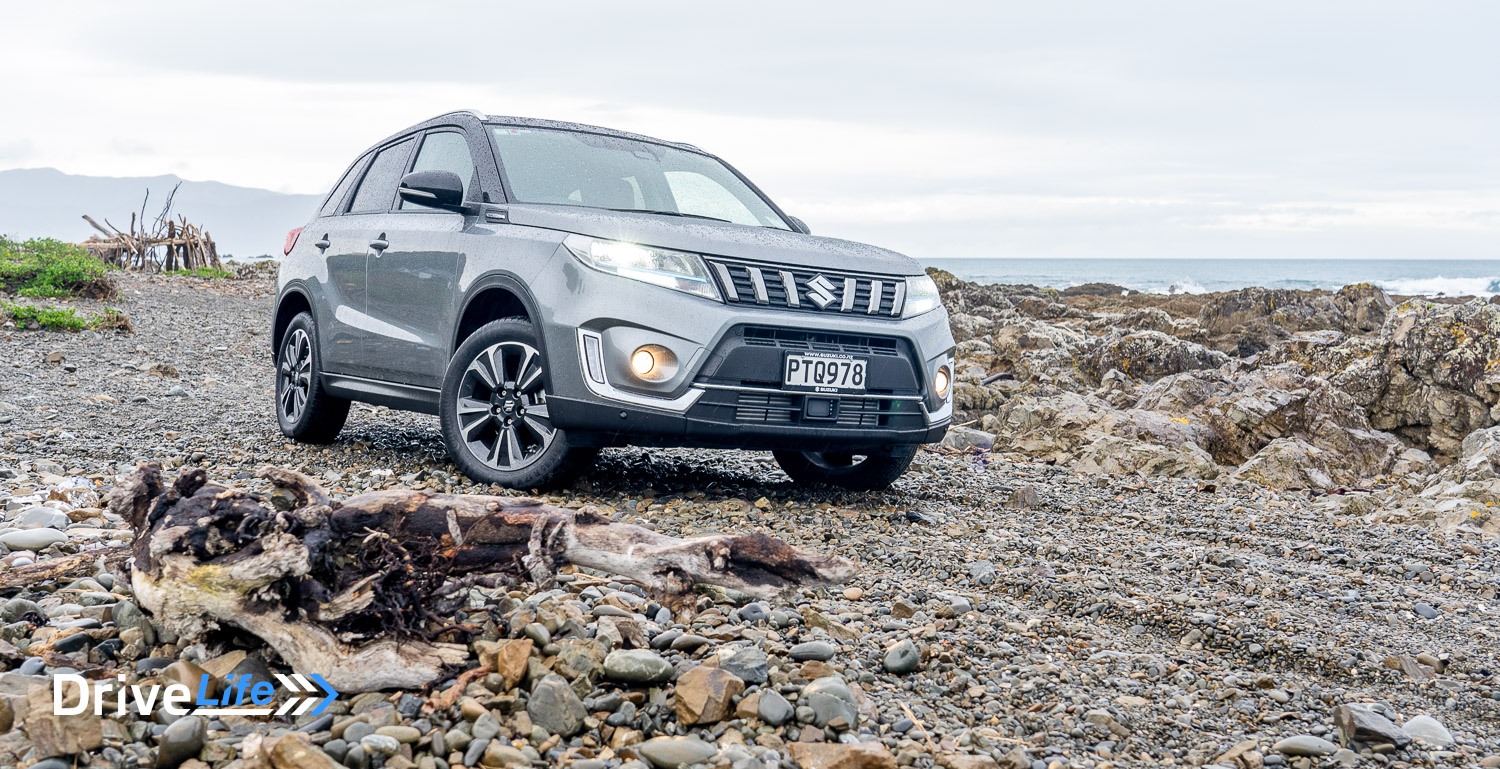
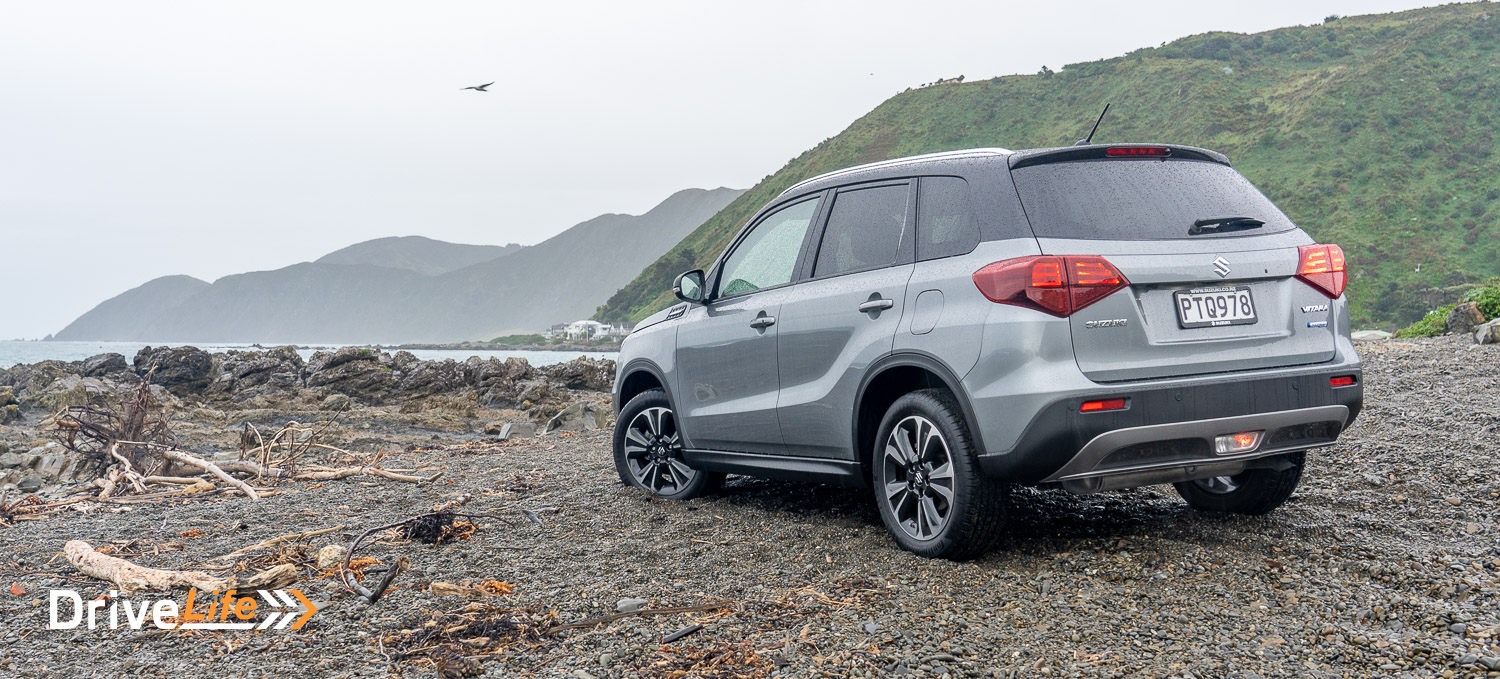
How Does The 2023 Suzuki Vitara Hybrid JLX AWD Compare To Its Competition?
Below are some of your alternatives to the Suzuki Vitara Hybrid. At this price point, you’ll be cross shopping with many non-hybrid models. This table compares all-wheel drive models, and have been roughly compared on a spec basis. All prices below exclude the refund or additional cost of the New Zealand Clean Car Programme.
| Make/ Model | Engine | Power/ Torque, kW/Nm | Seats | Fuel, L/100km | Boot Space, litres | Price (excl CCP) |
| Mitsubishi Eclipse Cross PHEV XLS | 2-litre 4-cylinder petrol plug-in hybrid (PHEV) | 94/199 | 5 | 2.1 | 359 | $52,990 |
| Toyota Corolla Cross Hybrid Limited AWD | 2-litre 4-cylinder petrol hybrid (BHEV) | 112/190 | 5 | 4.9 | 390 | $53,190 |
| Subaru Crosstrek Hybrid AWD | 2.0-litre, 4-cylinder boxer petrol hybrid (mHEV) | 110/195 | 5 | 6.5 | 315 | $46,990 |
| Mazda CX-30 GTX | 2.5-litre 4-cylinder petrol | 139/252 | 5 | 7.6 | 430 | $46,890 |
| Suzuki Vitara Hybrid JLX AWD | 1.4-litre turbocharged 4-cylinder petrol hybrid (mHEV) | 95/235 | 5 | 6.0 | 375 | $45,790 |
| Hyundai Kona Elite AWD Series II | 1.6-litre 4-cylinder turbocharged petrol | 146/265 | 5 | 7.7 | 371 | $45,490 |
| Kia Seltos EX Turbo AWD | 1.6-litre 4-cylinder turbocharged petrol | 146/265 | 5 | 8.2 | 433 | $43,850 |
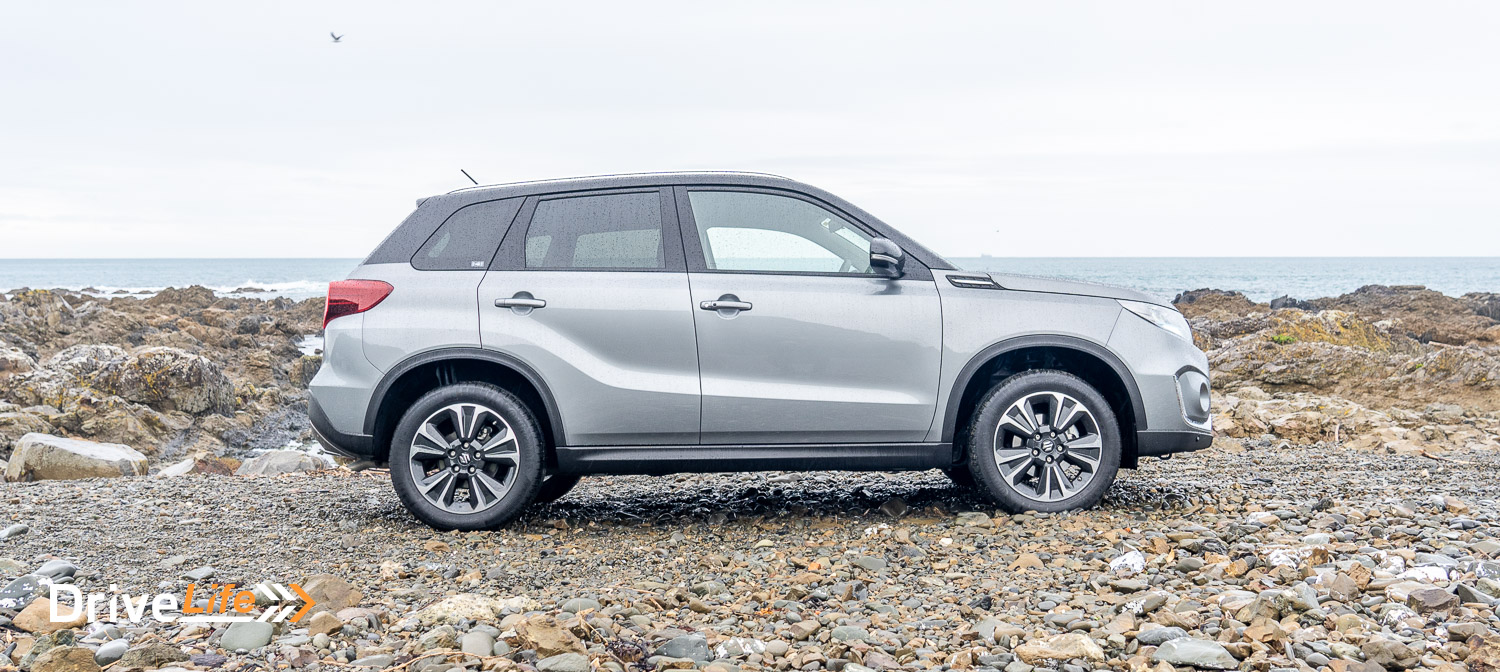
First Impressions Of The 2023 Suzuki Vitara Hybrid JLX AWD
When the Vitara launched in 2015, Suzuki had unveiled a decent-looking small crossover SUV. Sure, it was a marked departure from the boxy design of the old Vitara’s, but the design was never going to offend anyone.
Eight years into its life, the Vitara is showing its age, despite Suzuki’s attempt to tart up the exterior with a fresh set of alloys and LED lighting all-around.
Our car is finished with two-tone paint, meaning you get a black roof to contrast against the body colour. In grey, (or Premium Silver, according to Suzuki), it’s pretty easy to miss. However, Suzuki does offer some funkier colours, which in my view, should be the go-to for the Vitara.
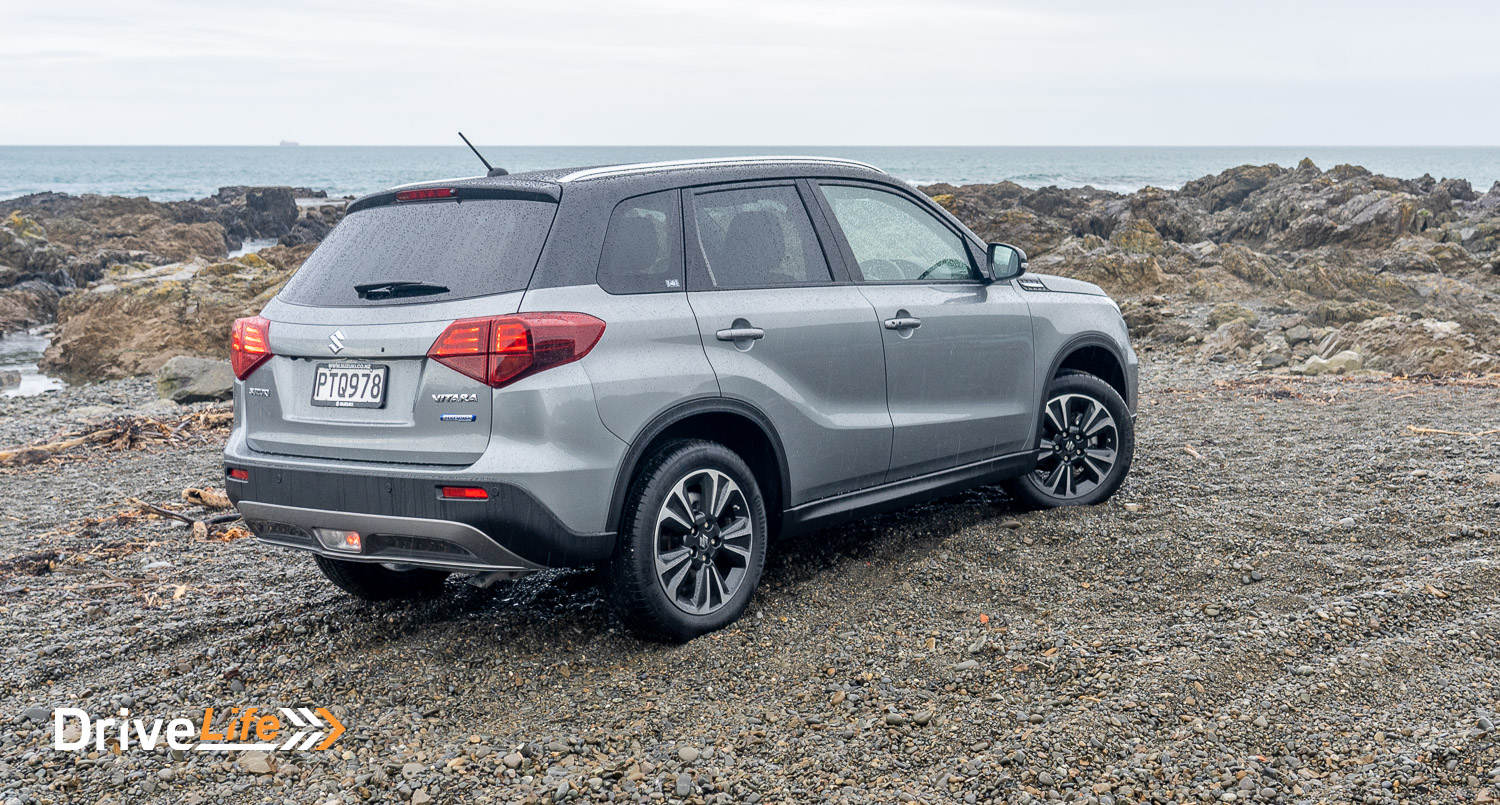
What’s The Interior Like In The 2023 Suzuki Vitara Hybrid JLX AWD?
In a similar vein, Suzuki has kept to an, erm, traditional approach with the interior of the Vitara Hybrid. ‘Traditional’, being the euphemism for saying that it’s fairly dated inside the Vitara compared to modern competitors.
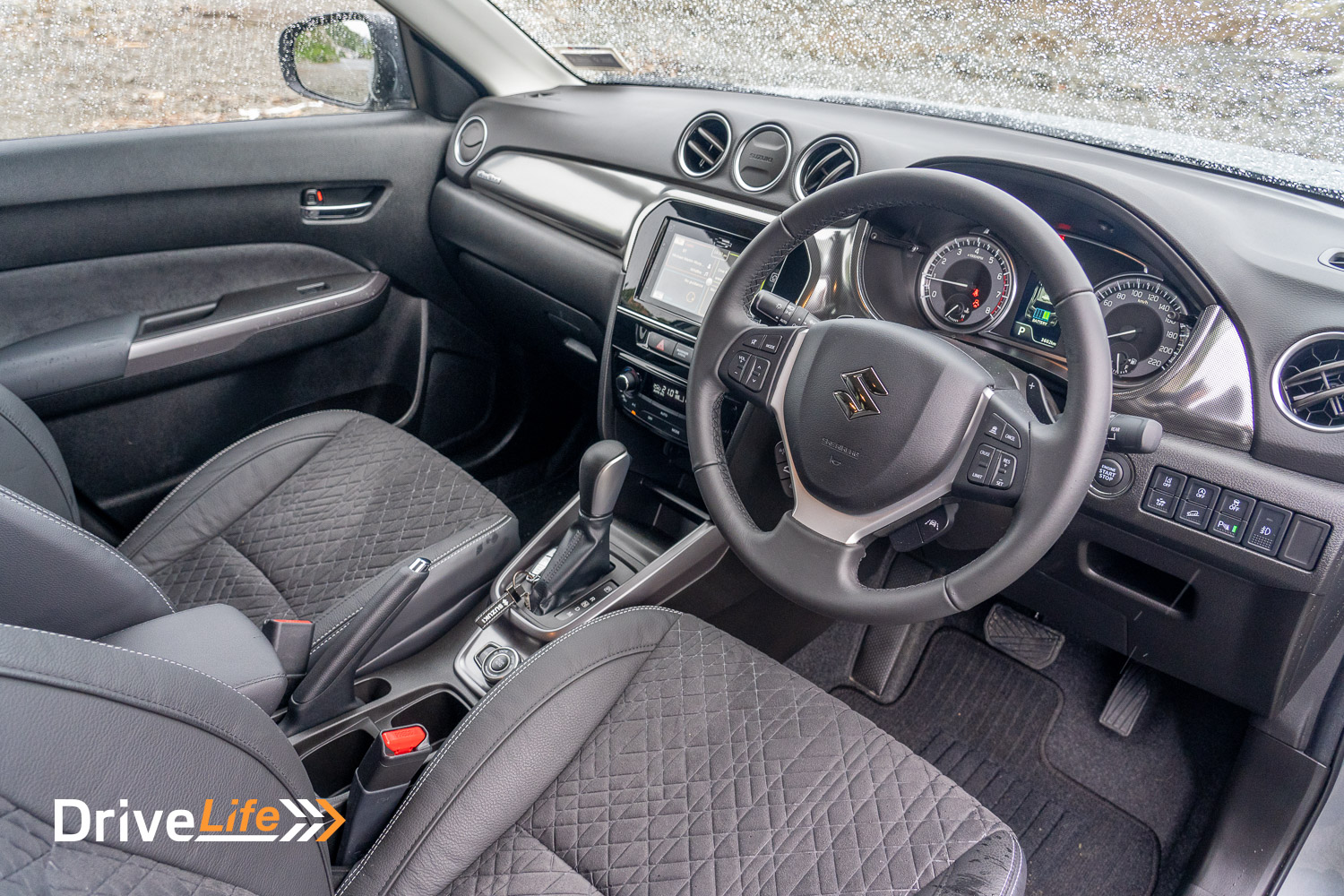
The reality is that despite modernising the powertrain, Suzuki hasn’t changed the interior since it was released in 2015. Granted, there’s nothing inherently wrong with that approach. Anyone after a no-fuss experience of manual handbrakes, analogue dials and simple ergonomics will likely feel right at home in the Vitara.
In other words, older people will like this car. Similarly, younger families may also be drawn to the Vitara Hybrid because of its utilitarian innards.
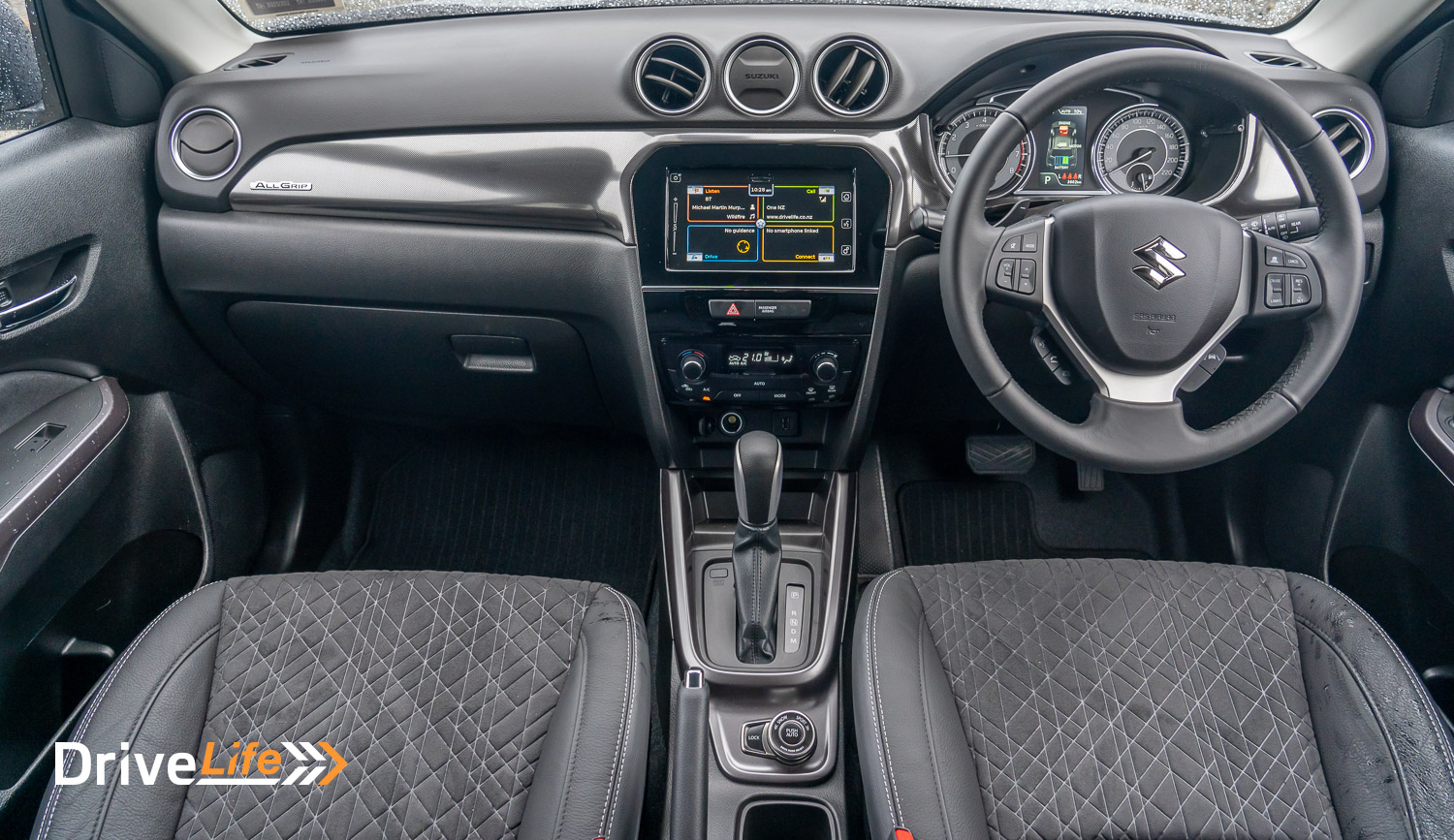
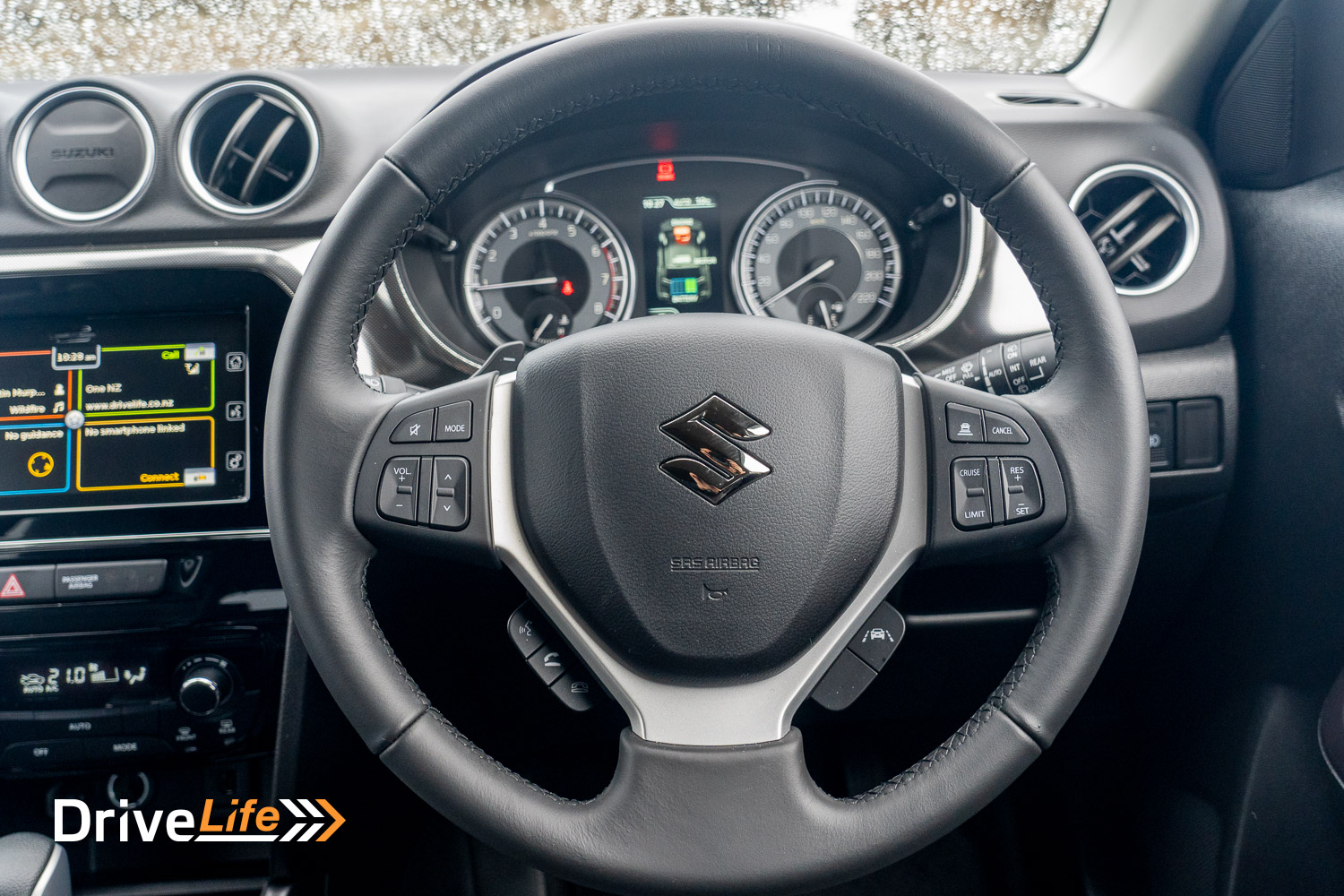
There’s plenty of cabin space, a good driving position, and window sills low enough to provide the kids in the back with a good vantage point. The Vitara’s hardy interior plastics and robust-feeling cloth upholstery also mean you’re less likely to grit your teeth, should the little-ones have a spill either.
Apart from those qualities, the Vitara hybrid fails to stack up to its competitors on standard equipment and technology for its price.
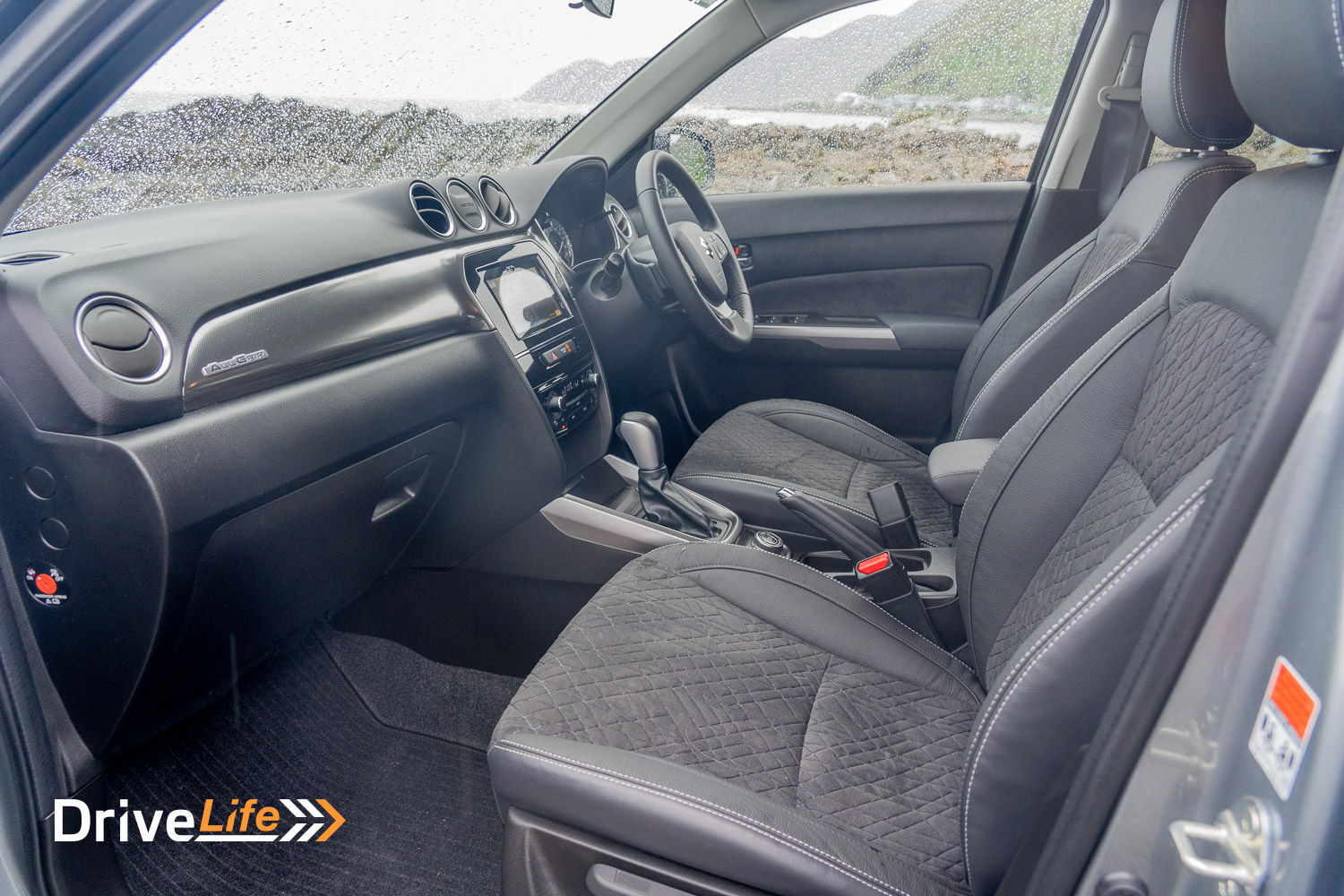
Sure, at this price, we can’t expect all the trimmings. However, this top-spec Vitara JLX is missing some features which nearly all of its competitors will offer to some degree. For example, it doesn’t offer heated seats, a 360-degree camera, automatic high-beams, nor even dual-zone climate control. Yet, you can get these features on Suzuki’s cheaper S-Cross.
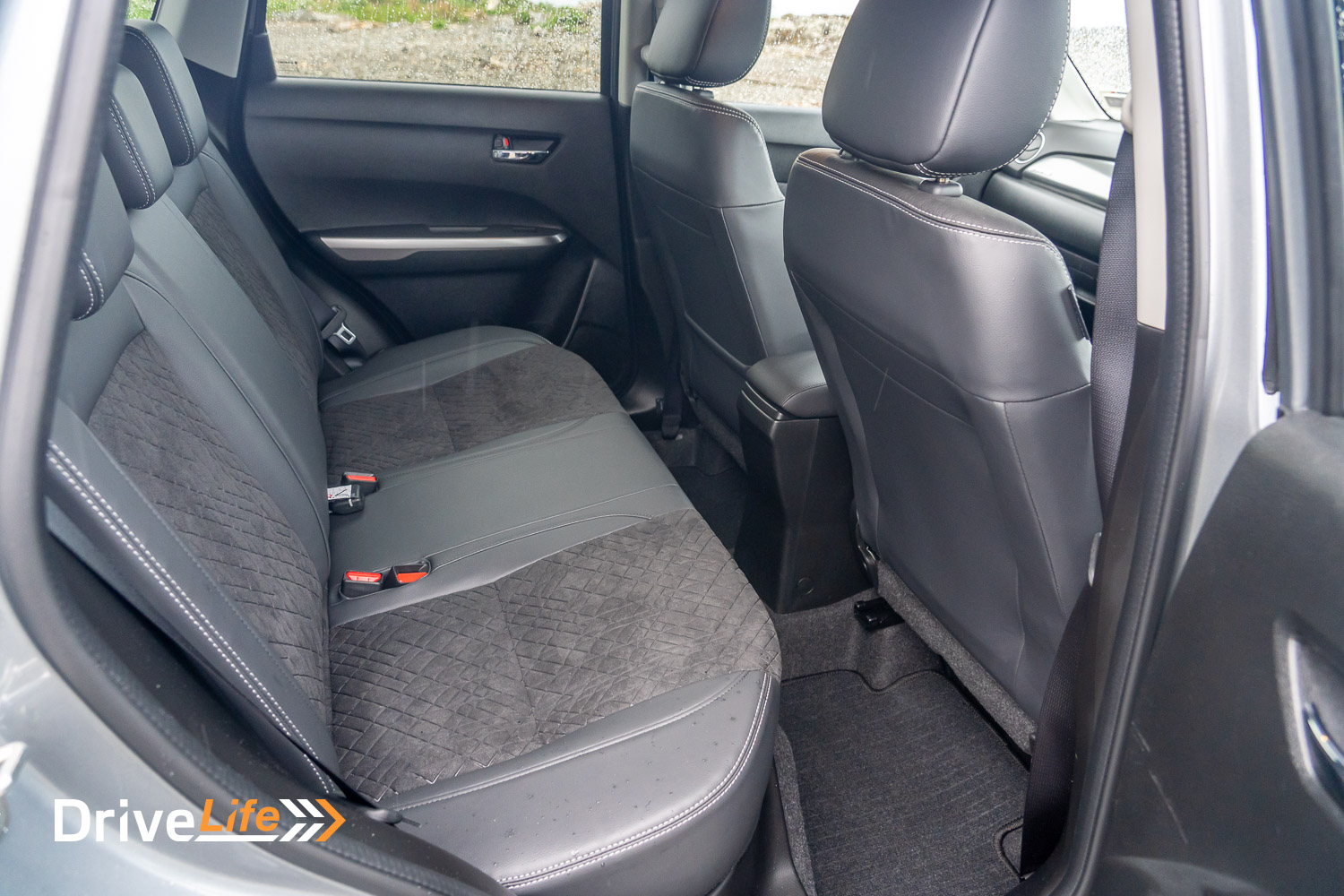
Another noteworthy shortcoming is the Vitara’s 7’’ infotainment screen. It’s essentially the same unit that came with the car in 2015, although it now features Apple Carplay and Android Auto.
The interface is easy enough to navigate, but it’s clunky to use due to its slow responsiveness. Resolution and on-screen graphics aren’t particularly strong either. I also had a couple of issues pairing to Bluetooth in our press vehicle too. More disappointingly, Suzuki does have a newer system, which featured in the S-Cross when we reviewed it.
As mentioned, the S-Cross also had a 360-degree camera, which isn’t an option on the Vitara. However, the sole reversing camera on the Vitara is of acceptable quality, and performs better than most with its night time resolution.
The dash cluster is analogue, for which I have few complaints. In the centre of it is Suzuki’s multi-info display, which features on all Suzuki models. The display is basic, featuring a handful of graphics including power and torque graphics, a quasi G-meter and a few others. They’re mainly there for fun, rather than any truly functional purpose. If I were to nit-pick, there isn’t a digital speedometer, which seems like an oversight given they went to the trouble for everything else.
Despite the short wheelbase and general stature, the Vitara is roomy for a small SUV. There’s plenty of head and leg room for both those in the front and the back. The front seats are on the firmer side, but are supportive and accommodate wider inseams quite comfortably – ask me how I know!
Boot space is a respectable 375 litres, which grows to 710 litres with the rear seats down. It seems generous at first, but space is roughly on par with the competition. There is a handy false floor however, should you want a flat loading surface.
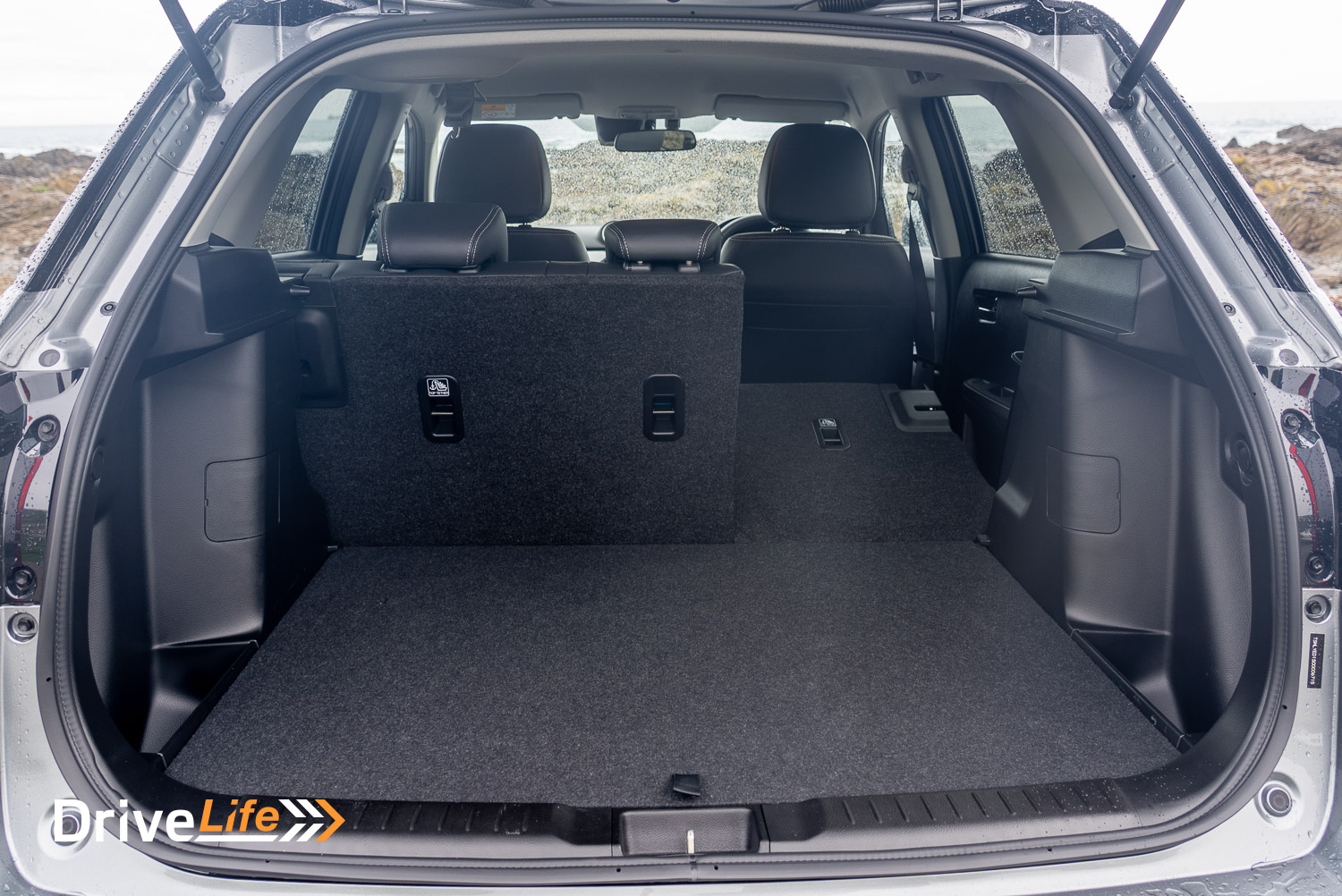
What’s The 2023 Suzuki Vitara Hybrid JLX AWD Like To Drive?
So, not much has changed inside the Vitara Hybrid, but we can be certain that it has changed underneath. Sort-of.
Why ‘sort-of’, you ask? Isn’t this a Hybrid now? Again, sort-of.
The Vitara Hybrid is a mild hybrid. Mild, is perhaps unintentionally literal. In other words, the Vitara Hybrid is not like a Toyota Prius, nor is it like a Honda Jazz or Civic Hybrid, where the petrol engine effectively acts as a generator. In fact, no electricity drives the wheels of the Vitara Hybrid.
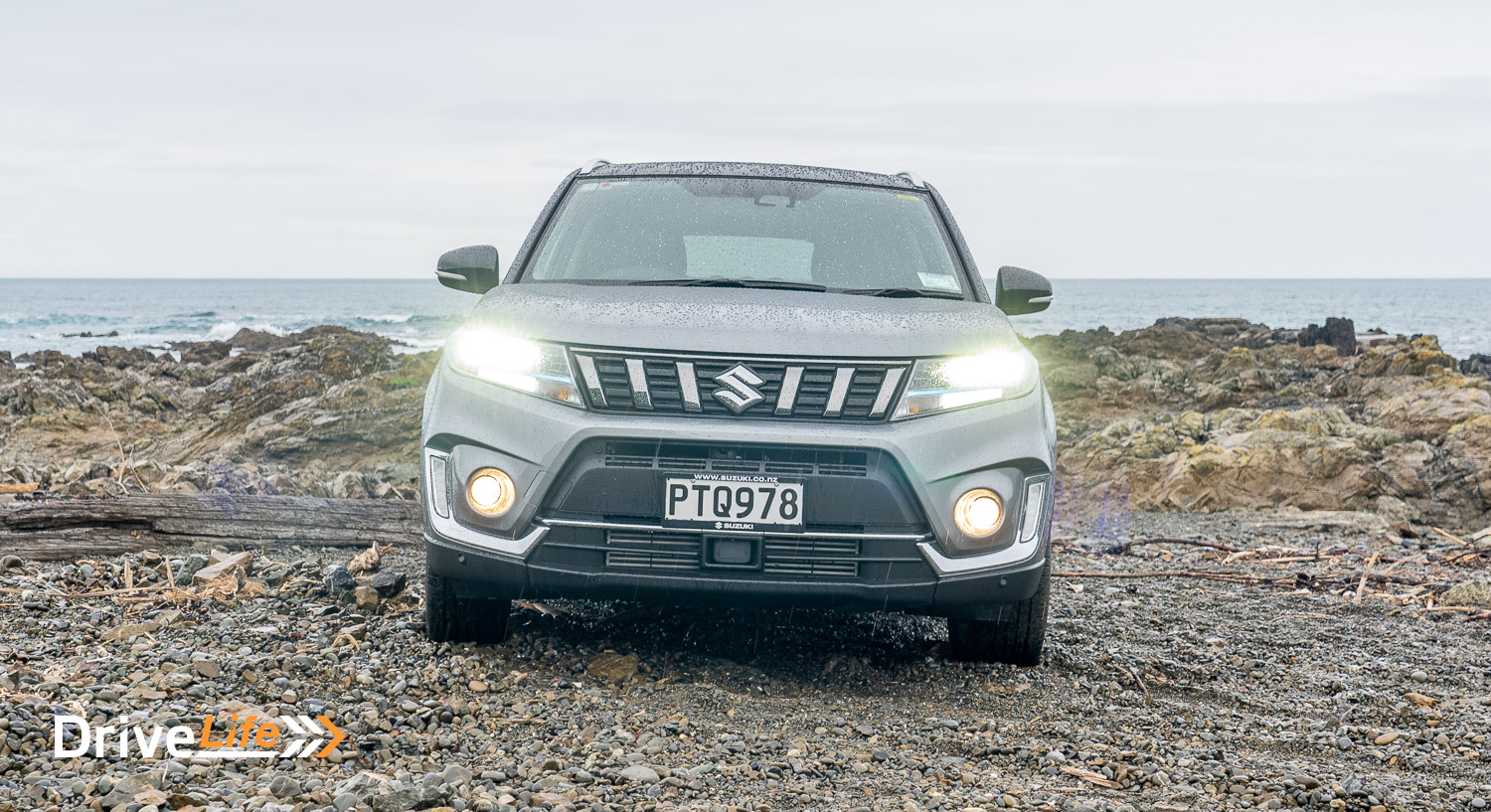
Instead, a mild hybrid is better understood as an energy recovery system. It stores electrical energy and uses it to support the functions of the petrol engine.
Mild Hybrid systems usually consist of a small electric generator and battery, running on a 48-volt electrical system. They accumulate energy to power vehicle features and accessories and allows the manufacturer to replace a traditional starter-motor and alternator.
In the Vitara Hybrid, energy is captured while decelerating which charges the battery. The stored energy is then applied to functions like the automatic start-stop system, allowing for smoother starts, and providing a small acceleration ‘torque-fill’ when moving off-the-line and when upshifting between gears. It also can supply power to interior accessories, such as the infotainment. In short, it collects energy otherwise wasted, and uses it productively.
So yeah, it’s not really a hybrid in the way that your average consumer would understand it. The cynical amongst us would probably label this as greenwashing.
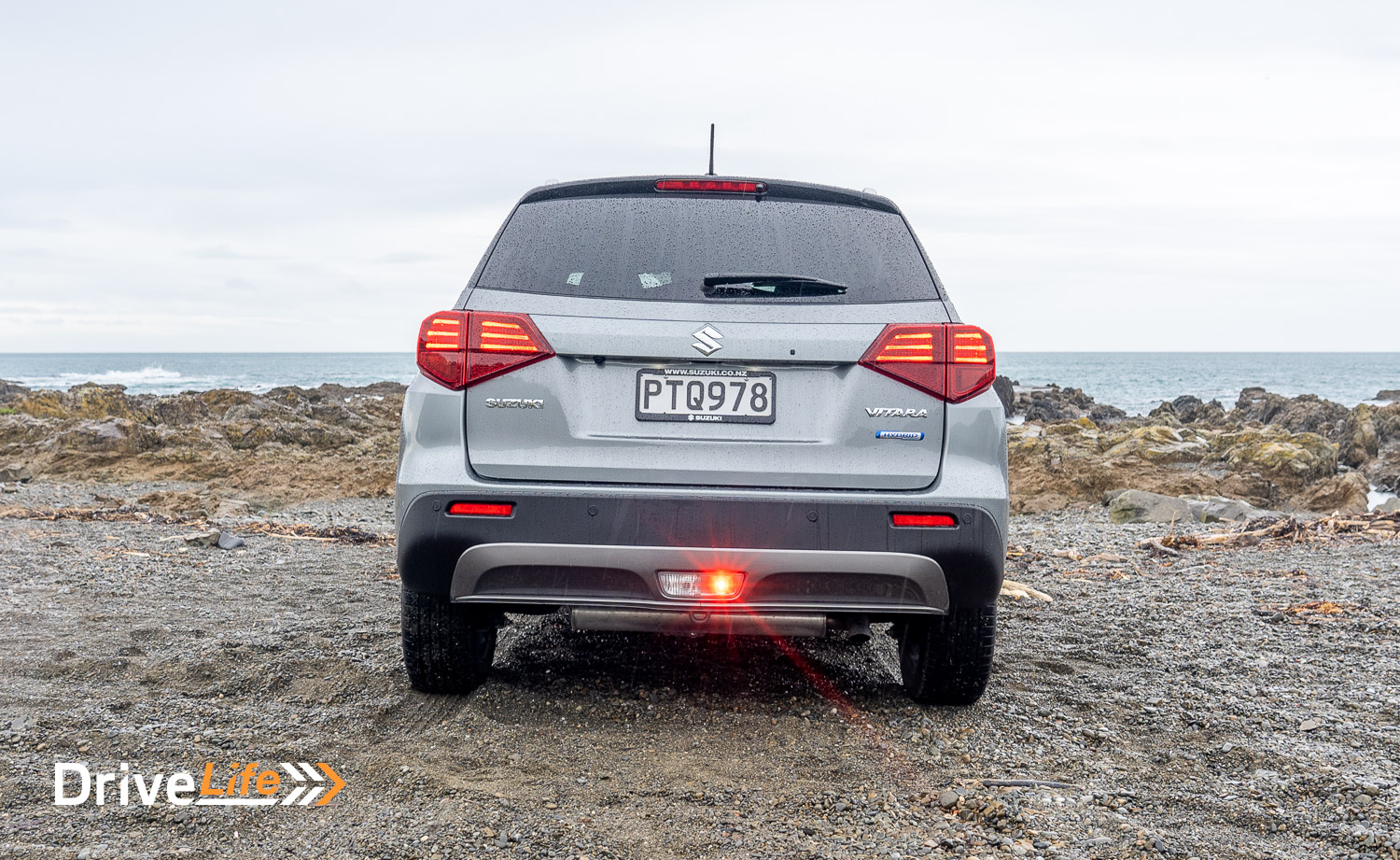
Although, we shouldn’t simply write this effort off, because mild hybrids do reportedly contribute to an approximate 15% fuel economy saving. The AWD Vitara Hybrid claims a fuel consumption figure of 6.0L/100kms, whereas the non-Hybrid Vitara Turbo claims an average of 6.9L/100kms, which is about 13%. The maths checks out.
We achieved an average of 6.8L/100kms during our test of the Vitara Hybrid, which again, is about right in the real world. Furthermore, Suzuki claims that it managed to reduce CO2 emissions by about 25g/100kms with the Hybrid Vitara, another 15% decrease.
Evidently, mild Hybrids are an improvement upon existing technology. The EV transition is hardly going to be seamless, so we’d be anti-progress if we didn’t support these efforts. I do think the industry does have a naming convention problem. I wouldn’t blame anyone for not understanding the difference. To really drive this point home, the Audi RS6 with a 4.0L twin turbo V8 is also a mild hybrid. Go figure.
Anyway, a naming convention isn’t the Vitara Hybrid’s problem when it comes to fuel economy. Instead, the Vitara Hybrid runs 95 Octane, meaning you’ll be paying for the expensive stuff when you fill up.
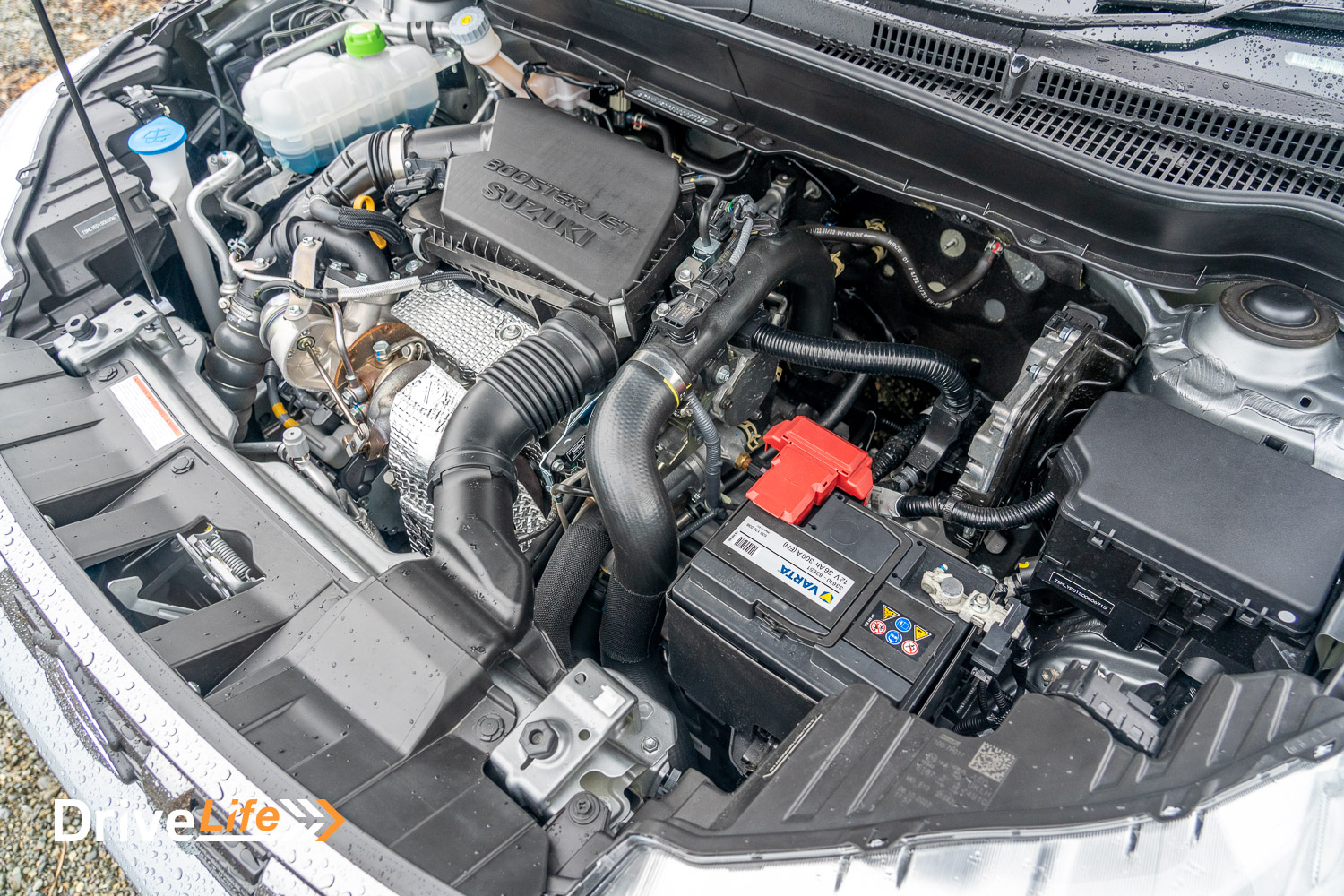
That expensive fuel is powering the Vitara Hybrid’s 1.4L turbocharged 4-cylinder petrol engine along with the 48V mild hybrid system and 10aH battery. It produces 95kW of power and 235Nm of torque, which is 8kW less but 15Nm more than non-Hybrid. Power is distributed via a 6-speed automatic gearbox and Suzuki’s all-grip all-wheel drive system.
This 4-cylinder ‘BoosterJet’ engine is shared amongst Suzuki’s range, with variants found in the Swift and the S-Cross. In the past, I’d said this engine is excellent, smooth, refined and torquey. It’s still a great engine, although it feels, say, slightly coarser in the Vitara Hybrid. I wasn’t the only one to notice, either.
Performance is still strong, however. With 235Nm and a frame that weighs only around 1,300kg, the Vitara Hybrid reaches the speed limit with convincing pace. Low-mid range performance is its definite strength. Otherwise, you’ll notice the performance tapering at the top of the rev range. The 6-speed auto is another strength, it shifts smoothly and it’s tuned well, meaning you’re unlikely to encounter any rev-hang or find it hunting for gears when driving uphill.
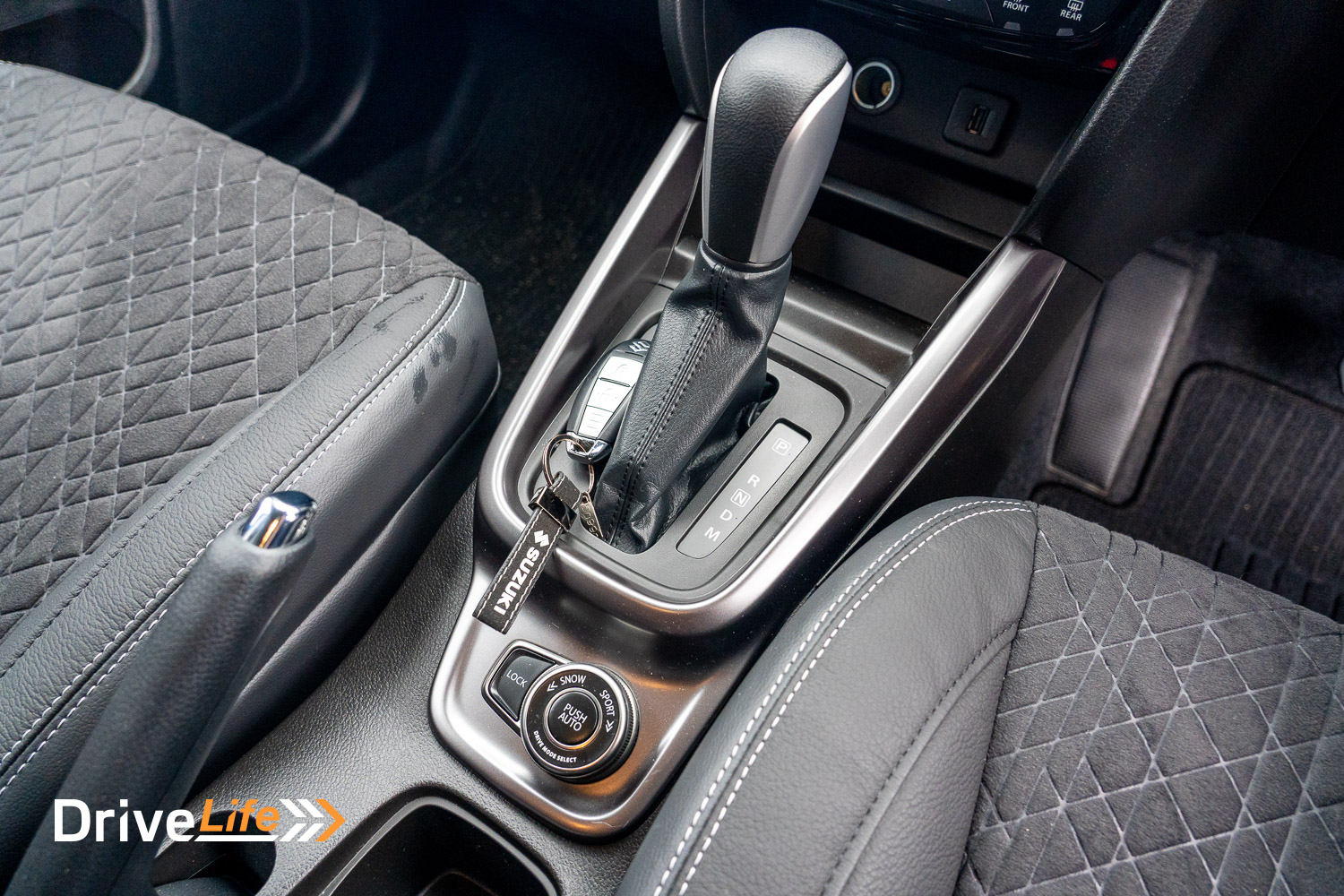
Underneath, the Vitara uses a basic suspension set-up consisting of strut-front and a torsion beam rear, which is standard economy car segment stuff. While you’re not going to be stunned by the handling, the Vitara’s light, yet stiff body (thanks, to an integrated ladder frame in its unibody structure) plus grippy front Continental EcoContact tyres (which come standard), keeps the Vitara confident through some twistier sections of urban tarmac.
The ride quality around town is reasonable too, and the tyres do not generate too much noise either.
That said, the Vitara isn’t quite as poised when the roads open and speeds begin to increase. The steering can become somewhat vague at open road speeds and that torsion beam rear-end can be upset by bumpy surfaces. Combined these can make the Vitara feel a tad skittish at times.
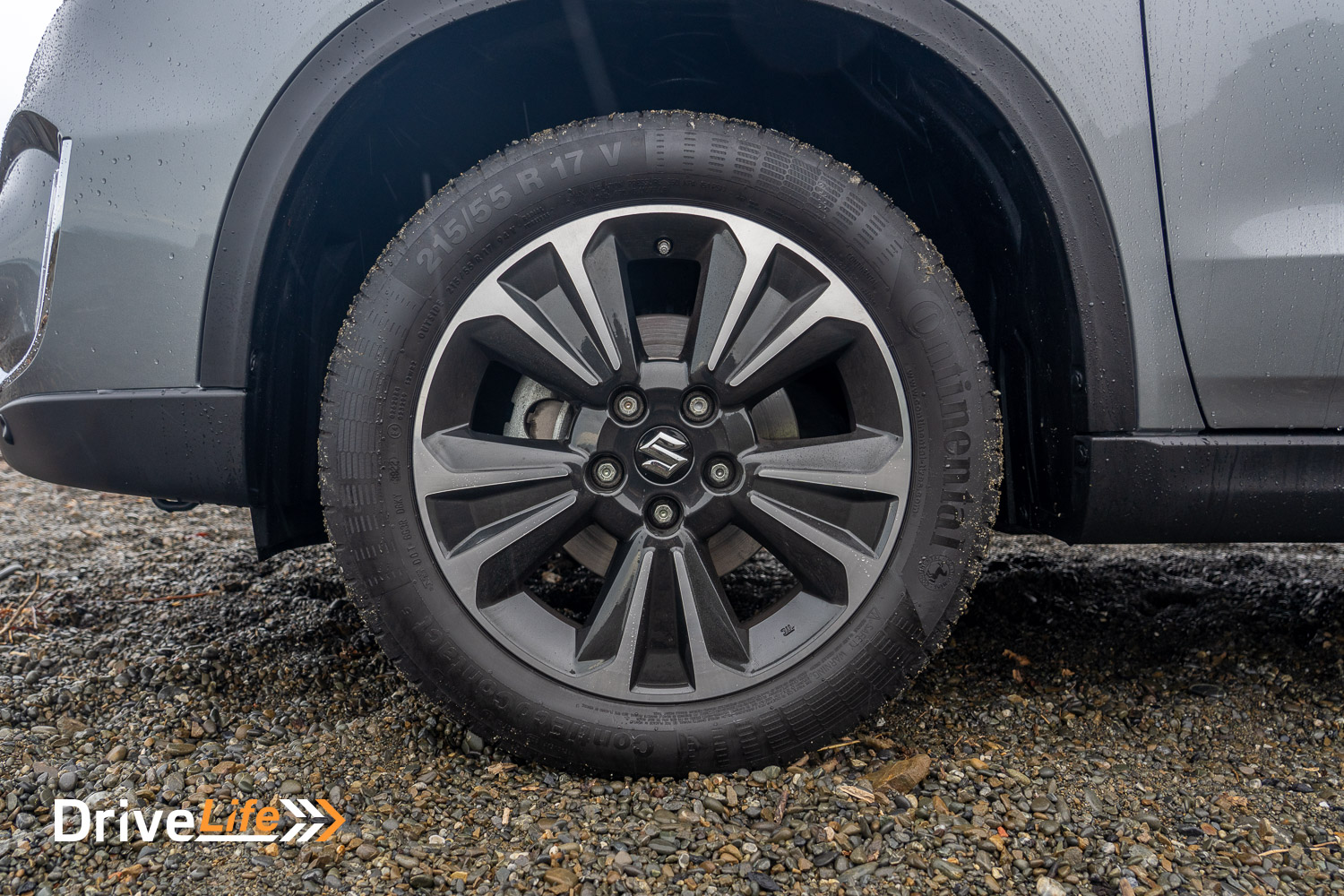
Of course, the good Conti tyres, the light frame and our Vitara’s All-Grip all-wheel drive will ensure you remain steady on the course, but that slight skittishness does mean the Vitara doesn’t make you feel as relaxed behind the wheel, compared to if it were to simply set.
On the subject of bumpy surfaces, another selling point of all-wheel drive Vitara is its All-Grip Select AWD system. It’s Suzuki’s name for software which uses the vehicle stability control systems to optimise the powertrain for different conditions, including light off-roading.
The software has four modes being Auto, Sport, Snow and Lock. The first three probably don’t need explaining, but for the benefit of the minority, you should match the mode to the conditions you see on the ground. If you can’t decide, use Auto.
‘Lock’ is more interesting and requires a tad more explaining. Instead of using a conventional locking differential, ‘Lock’ uses the brakes to minimise wheel slippage, and direct torque consistently to all-four wheels, with an approximate 50:50 split. It’s impressive software, which could get you out of a prickly situation where others would simply give up.
Granted, the Vitara isn’t a Suzuki Jimny nor is it the off-roader the Vitara once was, so don’t anticipate being able to do anything serious.While I had been critical of the Vitara’s antiquated interior tech, the Vitara Hybrid does have many of the expected safety features for 2023. From our experience, these systems are all well calibrated and aren’t too intrusive. However, I do think Suzuki could tweak the adaptive cruise somewhat – it can be a little janky with its inputs.
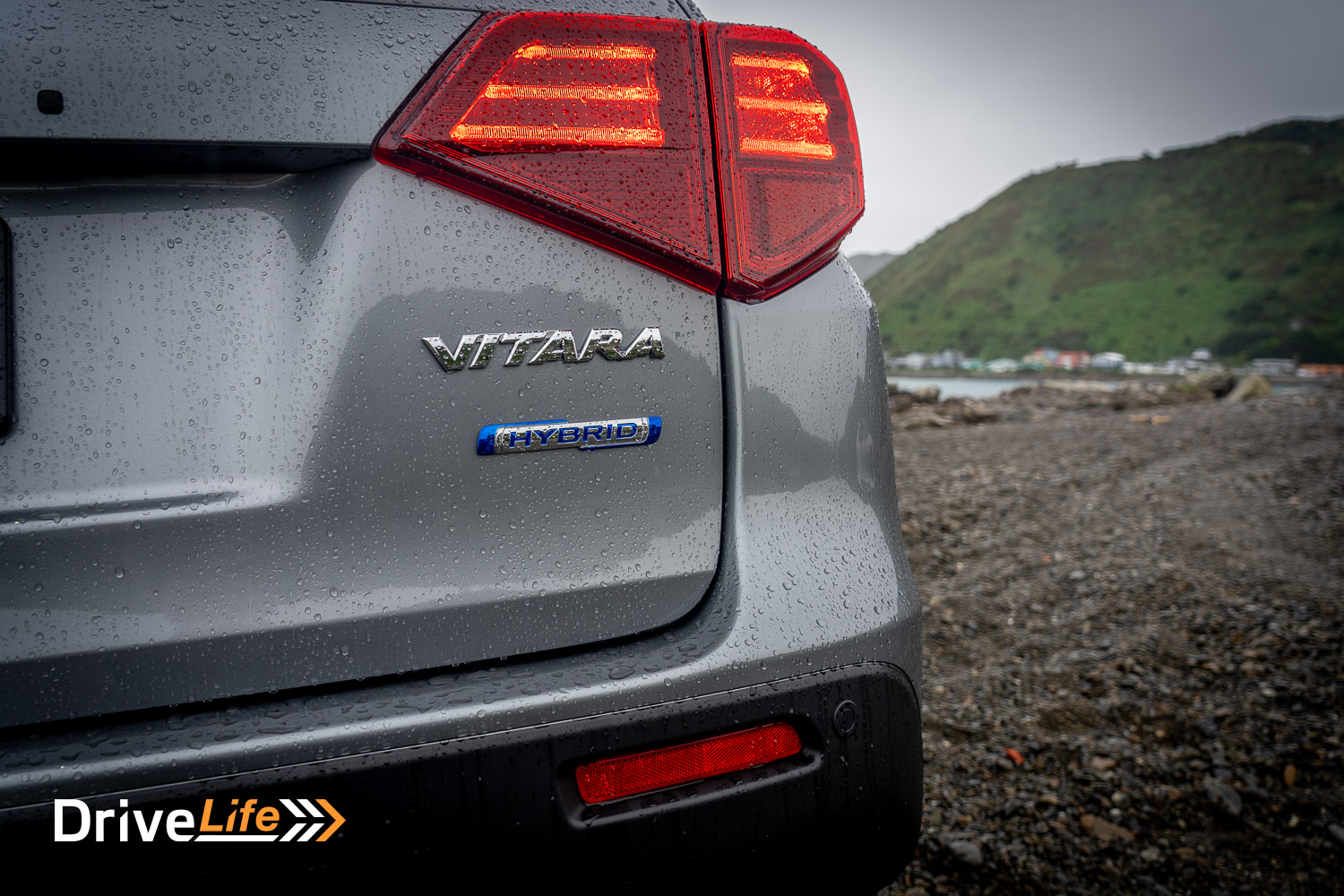
2023 Suzuki Vitara Hybrid JLX AWD – Fred’s Point of View
I was really looking forward to driving the Vitara Hybrid, mainly because I’d get to drive a Suzuki with the BoosterJet engine. I tested the first S-Cross with this motor and was blown away but its smoothness and its torque. What an engine, and it really is the best part the S-Cross.
What about in the Vitara Hybrid? I was surprised that it’s not quite as smooth or as quiet as I remember, but that hybrid system certainly gives the Vitara some extra low-down grunt. I’m not sure I’d buy the Vitara Hybrid to save fuel, as it doesn’t really seem that much more economical than the non-hybrid, if at all.
Other aspects of the Vitara are its great visibility. During my daily commute, those huge side windows helped with motorway driving immensely. The ride is better than I had expected, and overall the car is easy to live with on a daily basis. It can feel a bit old school – especially that infotainment system – but for a lot of buyers I believe they are going to get exactly what they want – familiarity.
I had a few niggles with the Vitara during my week with the car; the volume slider is still a pain to use, and every time I started the car the audio reverted to radio, sometimes extremely loudly, instead of picking up my phone on Bluetooth.
On the whole it’s still a Vitara and that’s not a bad thing, but the mild-hybrid system may disappoint some buyers; it’s extremely mild, and I’m not sure I could part with the extra cash to get it over the non-hybrid.
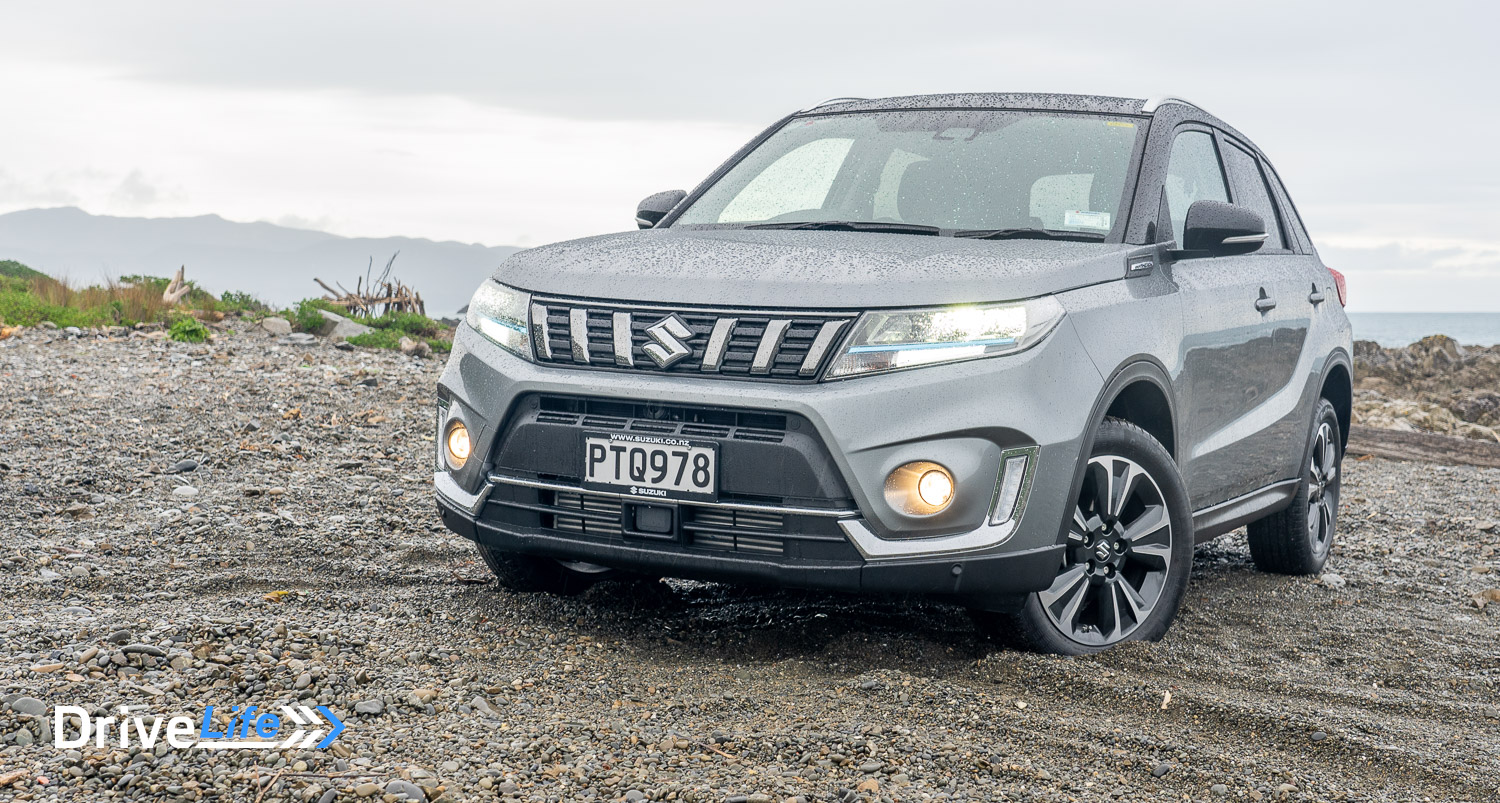
2023 Suzuki Vitara Hybrid JLX AWD – Specifications
| Vehicle Type | Compact SUV |
| Starting Price | $44,990 |
| Price as Tested | $45,790 |
| Engine | 1.4-litre turbocharged 4-cylinder petrol with mild hybrid system |
| Power / Torque, kW/Nm | 95/235 |
| Transmission | 6-speed automatic |
| Spare Wheel | Spacesaver |
| Kerb Weight, Kg | 1,295 (top spec) |
| Length x Width x Height, mm | 4175 x 1775 x 1610 |
| Boot Space / Cargo Capacity, Litres (seats up/seats down) | 375 (second row in-place) 710 (second row down) |
| Fuel tank capacity, Litres | 47 |
| Fuel Economy, L/100km | Advertised Spec – Combined – 6.0 Real-World Test – Combined – 6.8 Low Usage: 0-6 / Medium Usage 6-12 / High Usage 12+ |
| Towing Capacity Kg, unbraked/braked | 600/1500 |
| Turning circle, metres | 10.4 Small: 6-10m / Medium 10-12m / Large 12m+ |
| Warranty | 3 year/100,000 km new vehicle warranty 5 year powertrain warranty |
| Safety information | ANCAP Rating – Untested (2022 Model achieved 5 stars) Rightcar.govt.nz – 5 Stars – PTQ978 |
Have you enjoyed this review? Be sure to join our monthly email newsletter list so you don’t miss a single car review!


